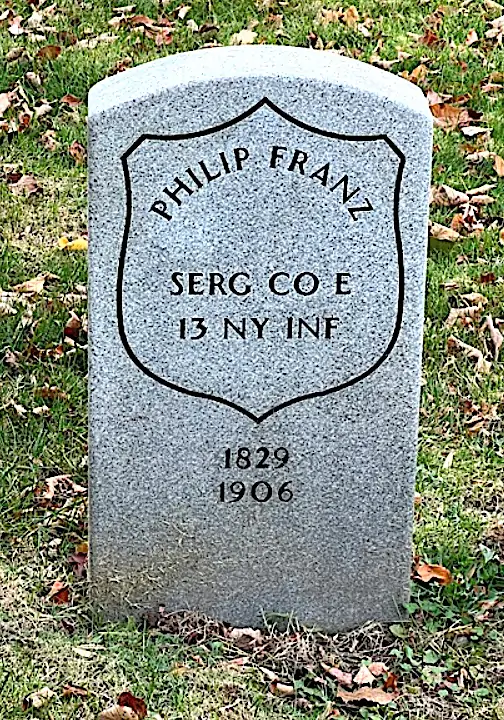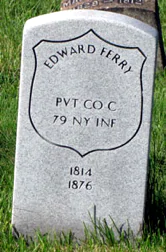
FERRY, EDWARD (1814-1876). Private, 79th New York Infantry, Company C. According to the census of 1860, he was a laborer who was born in Ireland. After enlisting as a private at New York City on May 13, 1861, Ferry mustered into the 79th New York on May 28. His son, Andrew Ferry, was in the same regiment and company. Further details of his military service are not known. He applied for and was granted an invalid pension on April 29, 1863, certificate 96,881.
As per an article in the Jersey Journal of Jersey City, New Jersey, on May 30, 1876, Edward, though elderly and frail, had been forced, after Andrew’s death a month earlier, to take a job as a sweeper in the paint shops in the meadows to support himself and his wife. That article reports that he was killed on the Pennsylvania Railroad but gives no other information about his death. He last lived in Fort Hamilton, Brooklyn. In December 1876, Jane Ferry applied for and received a pension as the mother of Andrew, certificate 192,724. Section 15, lot 17263, grave 502.
FERRY, J. (or JOHN) MILTON (1832-1889). Captain, 12th Regiment, New York State Militia, Company A. Born in Newburgh, New York, he enlisted as a second lieutenant at New York City on April 19, 1861, was commissioned in on May 2, promoted to first lieutenant on June 5, and mustered out after serving three months. A year later, when his regiment was re-activated for three months and part of the National Guard, he was commissioned as a captain on July 10, 1862, and mustered out on October 8 at New York City.
As per his 1865 passport application, Ferry was 5′ 10½” tall with dark eyes, hair and complexion, a high forehead, short chin and oval face. The census of 1870 records that he was a stationer and book dealer in New York City. In addition, he studied horticulture and devoted much of his time to plants, flowers, and fruits becoming very knowledgeable in that field. According to the census of 1880, he was employed as a hatter. Ferry last resided in Babylon, New York. His death was caused by carcinoma of the tongue.
In 1890, Louise Ferry, who is interred with him, applied for and received a widow’s pension, certificate 573,814. His grandson, who bore his name, applied for and became a member of the New York State Sons of the American Revolution, tracing his heritage to his great-great grandfather, Eliphalet Ferry. Section 72, lot 2292.
Civil War Bio Search
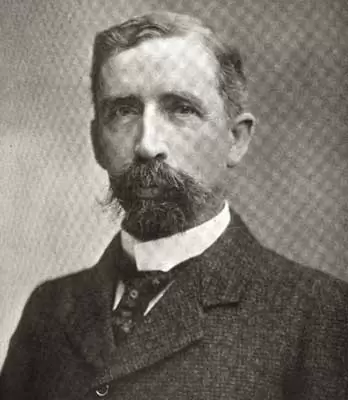
FETTEROLF, ADAM H. (1841-1912). Corporal, 17th Pennsylvania Infantry, Company B; private, 34th Pennsylvania Infantry, Company C. Originally from Perkiomen, Pennsylvania, he descended from a Mennonite family. A superior student who attended the Freeland Seminary (later known as Ursinus College), he became a professor of mathematics there when he was twenty, an unusual accomplishment for someone so young. During the Civil War, Fetterolf enlisted as a corporal at Harrisburg, Pennsylvania, on September 17, 1862, immediately mustered into the 17th Pennsylvania for its three month activation, and mustered out at Harrisburg on September 28. On June 3, 1863, he re-enlisted as a private and mustered into Company C of the 34th Pennsylvania serving until he mustered out on August 24, 1863.
After his military service, Fetterolf resumed his teaching career, first in the public schools, then as principal of the Freeland Seminary until it was purchased by Ursinus College. Subsequently, he was the principal of the Andalusia Hall School from 1870 through 1880 when he joined the faculty of Girard College in Philadelphia as its vice president. Two years later, he assumed the presidency of the school, prominent at the time for its charity and commitment to those in need. According to his obituary in The Philadelphia Inquirer, he retired from the presidency of Girard College in 1910 after being at its helm for twenty-eight years. His contributions to the school were recognized with honorary degrees from Lafayette College and other institutions.
After hearing of Fetterolf’s retirement in 1910, his “boys” expressed their gratitude by thanking him for “…teaching us by his own day to day living, that which constitutes the highest type of Christian gentleman…” (The school, whose campus opened in 1848, was endowed by Stephen Girard, a wealthy Philadelphia banker who made his fortune there after humble French beginnings. Girard bequeathed two million dollars for the education of white, male, orphaned and under-privileged children aged six through ten to attend the boarding school from the early grades through high school. However, because Girard’s will specified admission to “white, male orphans,” court cases and controversy surrounded the school as a result of the Civil Rights Era. Eventually, African-American males were admitted in 1968, females in 1984.)
Among the many organizations to which Fetterolf belonged were the Historical Society of Pennsylvania, the American Academy of Political and Social Science, and the Art, City, Geographical and Contemporary Clubs. The Veterans Schedule of 1890 confirms his Civil War service. His last residence was 1936 Pine Street in Philadelphia, Pennsylvania. Fetterolf died of an intestinal obstruction. His second wife, Laura Mangam Fetterolf, who is interred with him, was the daughter of a wealthy New York merchant. Section 81, lot 18133.
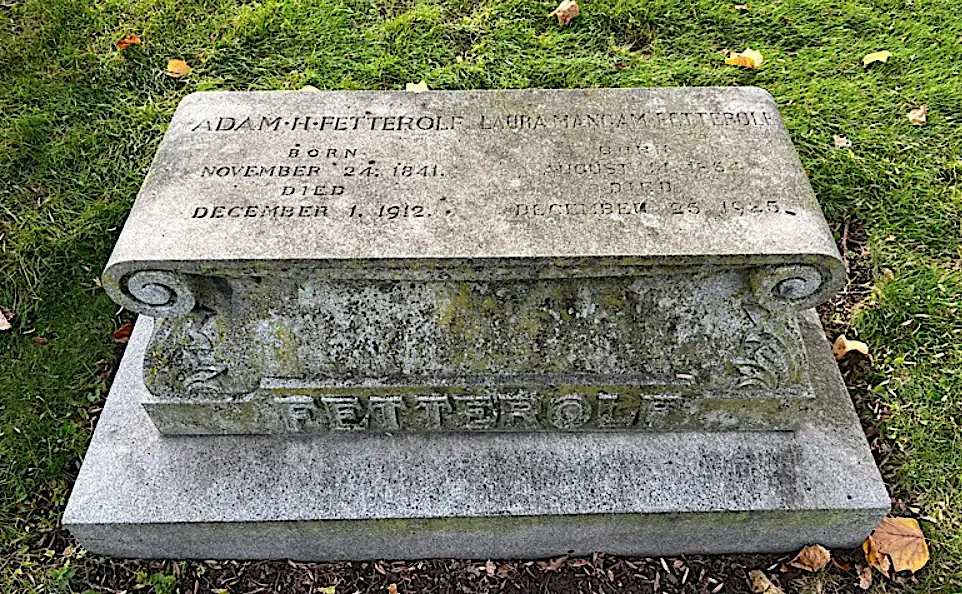
FEUERBACH, LAWRENCE (or LORENZ, LORENZO) (1825-1880). Sergeant, 66th New York Infantry, Company E. Of German origin, Feuerbach and his wife were listed on the manifest of the Ocean Queen which arrived in New York in July 1851. At that time, he was a shoemaker. On October 4, 1856, he became a naturalized citizen. During the Civil War, Feuerbach enlisted as a private at New York City on September 6, 1861, mustered into the 66th New York on November 4, and was promoted to sergeant on November 11 of that year. He was discharged for disability on November 14, 1863, at Convalescent Camp, Virginia.
As per the 1870 census and the 1876 New York City Directory, Feuerbach was a saloon-keeper; the 1880 census shows that Elizabeth Feuerbach, his widow, was running a beer lager saloon. His last residence was 18 Clinton Place in Brooklyn. His death was caused by meningitis. In 1890, Elizabeth Feuerbach, who is interred with him, applied for and was granted a widow’s pension, certificate 324,303. In addition, she confirmed her husband’s Civil War service on the Veterans Schedule of 1890. Section 156, lot 22355.
FICHT, E. OTTO (1820-1901). Unknown rank, 7th Regiment, New York State National Guard. Ficht was born in Germany. According to his obituary in The New York Times, he was a veteran of the 7th New York State National Guard. A physician, he last lived at 104 So. Fullerton Avenue in Montclair, New Jersey. He died of chronic intestinal nephritis and heart failure. Section 121, lot 12566.
FIELD, JAMES (1840-1884). Fife major, 11th New York Infantry, Companies H and A; chief musician, 4th Maryland Infantry. Of British origin, Field enlisted as a private at New York City on April 13, 1861, and mustered into Company H of the 11th New York, known also as the Ellsworth Zouaves. On May 7, he was transferred into Company A, fought at Bull Run, Virginia, on July 21, was promoted to fife major on August 1, and was discharged at New York City on July 2, 1862, when his unit was disbanded. He re-enlisted at Baltimore, Maryland, as a musician on September 13, 1862, and mustered into the 4th Maryland where he served for two years and eight months. During that period he saw action as part of the Army of the Potomac at Harpers Ferry, West Virginia (July 6, 1863); and in Virginia at the following battles: Wilderness (May 5-7, 1863); Spotsylvania Court House (May 8-21, 1863); Totopotomoy (May 27-31, 1864); North Anna (May 22-26); Weldon Railroad (June 23-24, 1864); the Siege of Petersburg (June 15-April 2, 1865); and Hatchers Run (February 5-7, 1865). Field was promoted to chief musician on February 28, 1864, and mustered out on May 31, 1865, at New York City. He was a member of Henry M. Lee Post #21 of the G.A.R. Typhoid fever was the cause of his death. Section 14, lot 4969, grave 293.
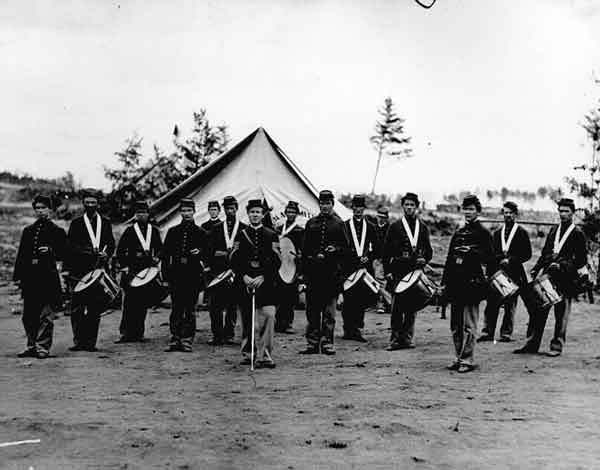
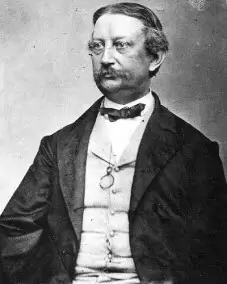
FIELD, MAUNSELL BRADHURST (1822-1875). Assistant Secretary of the Treasury. Born in New York City, his grandfather, Samuel Osgood, was the first Postmaster General of the United States in the administration of George Washington. A graduate of Yale in 1841, he began practicing law six years later and was associated with the firm of John Jay. At the onset of the Civil War, he became deputy sub-treasurer of the United States and subsequently became Assistant Secretary of the Treasury, a position he held until 1865. In 1864, Samuel Chase sought to appoint Field the assistant United States Treasurer in New York but the nomination was blocked by Senator Edwin Morgan who appealed to President Abraham Lincoln to select another New Yorker. Ultimately, Chase’s letter of resignation over this matter was accepted.
After Field returned to New York, he was collector of internal revenue, then returned to the practice of law and was appointed judge in 1873. In addition to his legal career, he earned a reputation as a writer after penning Memories of Many Men and Some Women, an anecdotal recollection of distinguished Americans he had met in his life and including an account of Lincoln’s death. In the aforementioned account, he wrote about his reaction to hearing that Lincoln was shot, his efforts to assist Mrs. Lincoln after he rushed to the house where she was keeping watch, his despondency after seeing the slain President, and his inability to concentrate, do his job, or even write an article for newspapers about what he had seen and experienced. Part of his account of Lincoln’s death focused on the President’s appeal to the common man:
Perhaps the most affecting incident connected with this drama occurred an hour later. Mr. Lincoln’s body, enclosed in a plain wooden box, around which was wrapped an American flag, was borne from the house by six private soldiers; then placed in an ordinary hearse, behind which the soldiers marched like mourners; and so carried to the Executive Mansion. As the cortege passed along, it attracted but little attention, for but few persons knew what burden was being carried past their doors. It was fitting that this great man of the people-plain UNCLE ABE then, as in years gone by in his Western home-should pass through the silent streets of the capital under the escort of common men. The rude backwoodsman, who had become a Moses to lead a people to deliverance from servitude, when dead, first fell into the arms of men humble as he himself had been….
Field last lived at 45 East 23rd Street in Manhattan. He died of organ and liver disease. His remains were removed from New York City’s Marble Cemetery in 1920, when he was re-interred at Green-Wood. Section 129, lot 35535.
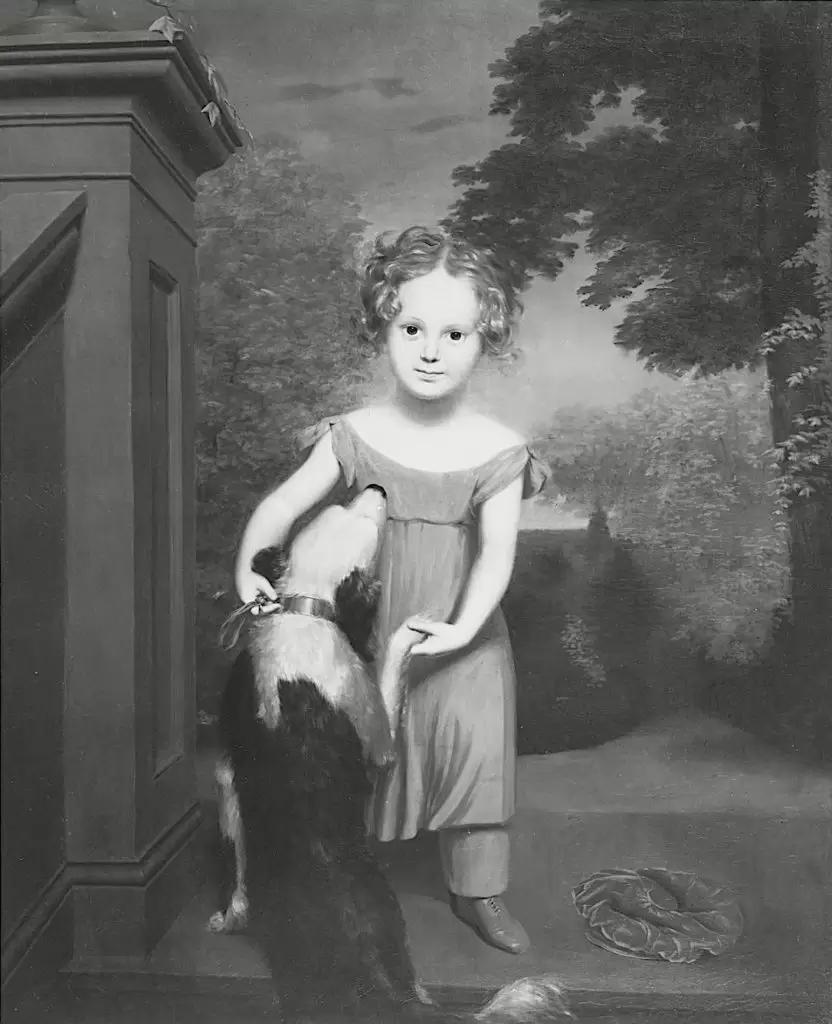
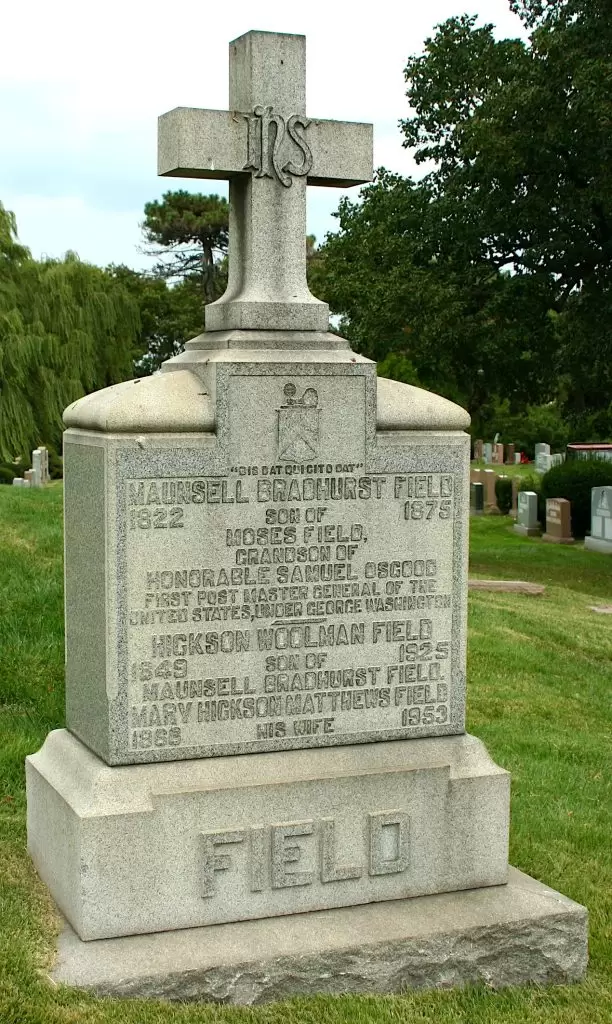
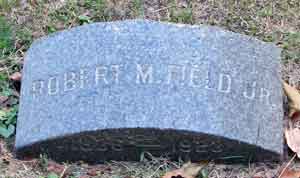
FIELD, JR., ROBERT MOORE (1836-1923). Private, 7th Regiment, New York State Militia, Company H. A native of New York City, his passport application from 1859 indicates that he was 5′ 7¾” tall with a Roman nose, high forehead, blue eyes, brown hair, florid complexion, and thin face. During the Civil War, Field enlisted on April 19, 1861, and served for 30 days with the 7th Regiment when it was activated that year.
He followed in the footsteps of his father as a banker; his father, who had the same name, was the second vice president of the Bowery Savings Bank. He was the brother of Samuel Field (see). As per his obituary in The New York Times, he was a member of Lafayette Post #140 of the G.A.R.; members of the organization and those of the Lafayette Camp, Sons of Veterans, were invited to attend his funeral. He last lived at the home of his daughter at 14 Chestnut Avenue in Larchmont, New York. The cause of his death was lobar pneumonia. In 1929, Martha Field, applied for a widow’s pension, application 1,633,406, but there is no certificate number. Section 82, lot 3430.
FIELD, SAMUEL B. (1841-1934). Private, 7th Regiment, New York State Militia, Company H. Born in New York City, Field enlisted a private on April 17, 1861, served in the 7th Regiment during its 30-day activation, and mustered out on June 3. In 1932, he applied for a pension, application 1,716,960, but there is no evidence that it was certified. He was the brother of Robert Field (see). He last lived at 146 Garfield Avenue in Plainfield, New Jersey. The cause of his death was arteriosclerosis. Section 82, lot 3430.
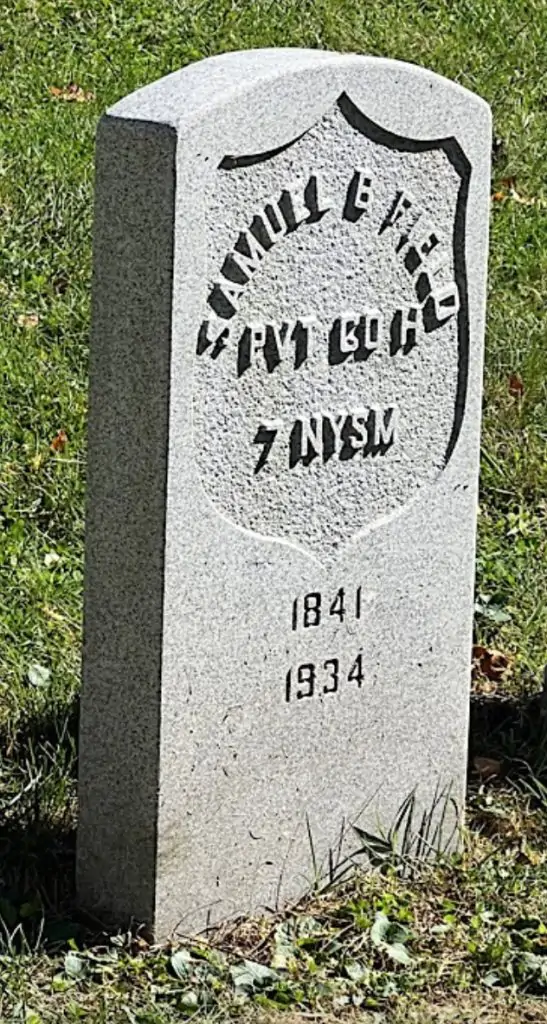
FIELD, THOMAS (1830-1868). Private, 2nd New York Heavy Artillery, Company B. A native of Ireland, Field enlisted at New York City as a sergeant on September 17, 1861, and mustered into the 2nd New York Heavy Artillery the next day. Six days later, he deserted at Staten Island. He last lived at 12 Thompson Street in Manhattan. Section 121, lot 11189, grave 169.
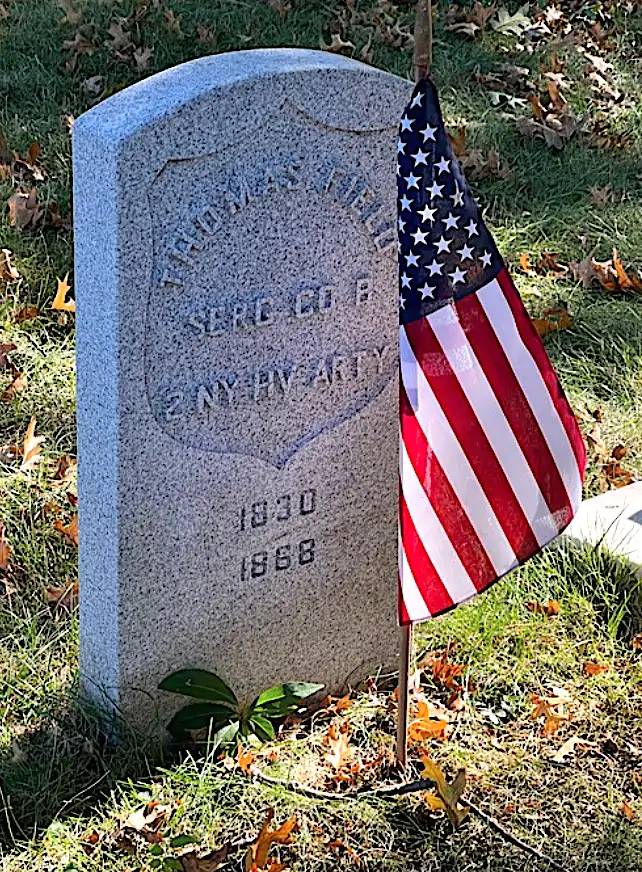
FIELDER (or FEILDER), GEORGE H. (1836-1909). Corporal, 12th New York Infantry, Companies C and D; 5th New York Veteran Infantry, Company F; private, 12th Regiment, New York State Militia, Company C. Born in England, Fielder enlisted in 1861 as a private for a tour of three months and mustered into the 12th Regiment’s Company C. He mustered out on August 5, 1861, at New York City. On October 1, 1861, he re-enlisted at New York City with many other members of his regiment and mustered the next day into the volunteer service for three years. The organization, known as the 12th Militia, consolidated in January 1862 with the 12th Volunteers. On June 23, 1863, he was transferred to Company D and was promoted to corporal at some point during his service. He was transferred into the 5th New York Veteran Infantry, Company F, on June 2, 1864.
The 1876 New York City Directory reports that Fielder was a carpenter. As per the census of 1880, he worked in a blind and sash factory; the 1884 New York City Directory indicates that he was a sash-maker. In 1887, he applied for and received an invalid pension, certificate 693,442. The Veterans Schedule of 1890 confirms his Civil War service. In 1895, Fielder was admitted to the Home for Disabled Soldiers in Hampton, Virginia, suffering from rheumatism, loss of sight in the left eye and some deafness. His records from the Soldiers’ Home show that his wife was sent $1,269 of his “labor money” after he died from heart disease. Louise Fielder, who is interred with him, applied for and received a widow’s pension in 1909, certificate 697,526. Section 51, lot 9940, grave 10.
FIELDMAN (or FELDMANN), JULIUS C. (also enlisted as MILLER, JULIUS) (1840-1894). Sergeant, 2nd California Infantry, Company I; 2nd Massachusetts Cavalry, Company F. Born in Hessen, Germany, and at one time a resident of California, he worked as a brass finisher. Using the alias Julius Miller, he enlisted as a corporal at San Francisco, California, on November 7, 1861, and mustered into the 2nd California Infantry. He was promoted to sergeant on January 9, 1862, was detached as escort to a pack train in July 1862, and reduced to ranks (private) on January 26, 1863. Fieldman deserted from Fort Gaston, California, on February 16, 1863. Subsequently, he surrendered to the 2nd Massachusetts under President Abraham Lincoln’s Proclamation, then in force on the Pacific coast, which allowed deserters to return to service and avoid punishment.
Enlisting on April 2, 1863, as a private, he mustered the next day into the 2nd Massachusetts Cavalry. As per his muster roll, he was 5′ 7″ tall with blue eyes, chestnut brown hair and a light complexion. His muster roll indicates that he was on picket duty in November 1863, assigned as a carpenter in December 1863, and on extra daily duty in February 1864. In November 1864, he was promoted to sergeant. Fieldman was discharged on January 30, 1865, by order of the War Department, at Camp Russell, Virginia. On September 19, 1876, the notation of his desertion from the 2nd California Infantry was canceled because of his subsequent service in the 2nd Massachusetts Cavalry and the date of February 16, 1863, was changed to his discharge date.
Fieldman’s application for an invalid pension was granted in 1890, certificate 858,435. The Brooklyn Census for 1892 lists his occupation as “R.R.” As per his obituary in the Brooklyn Daily Eagle, he belonged to fraternal organizations including the George C. Strong Post #534 of the G.A.R.; his comrades were in invited to attend his funeral. Fieldman last resided at 1220 Gates Avenue, Brooklyn. His death was attributed to heart disease. Agnes Fieldman, who is interred with him, applied for and was granted a widow’s pension in 1894, certificate 403,254. In 1895, application 616,203 was filed for a minor’s pension by Bernhard Degenkolb, guardian, most likely for their daughter Augusta, who was blind, but there is no certificate number. Section 135, lot 27263, grave 1258.
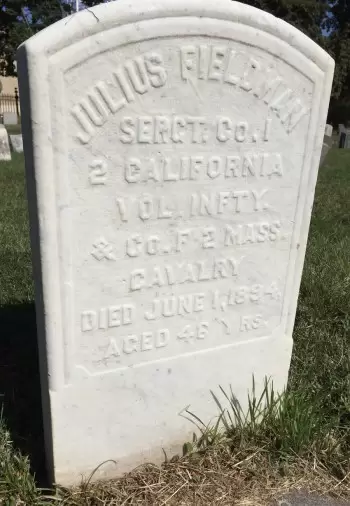
FIELDS, WARRINGTON (also enlisted as WALLACE, PETER) (1822-1884). Private, 56th Regiment, New York State National Guard, Company H; 14th New Jersey Infantry, Company D; 2nd New Jersey Infantry, Company D. During the Civil War, Warrington Fields was borne on the rolls first by his given name and subsequently by his alias, Peter Wallace. He was first borne as Warrington Fields, a private in Company H of the 56th Regiment, when that unit was called into service for 30 days in 1863. He re-enlisted as a private, using the alias Peter Wallace, on February 23, 1865, mustered into Company D of the 14th New Jersey that same day and was transferred on June 18, 1865, into Company D of the 2nd New Jersey from which he was discharged on an unknown date.
According to the 1868 Brooklyn Directory, Fields was in the fish business and lived on 19th Street near Third Avenue; at the time of the 1875 Brooklyn Directory, he lived at 662 Fifth Avenue. The 1884 Brooklyn Directory lists Fields as a weigher whose home address was 162 26th Street. He died at Long Island College Hospital from peritonitis. Lucretia Fields, the daughter of Albert Voorhees and Catherine Stillwell, well-known Brooklyn families, who is interred with him, applied for and received a widow’s pension in 1890, certificate 417,185. His pension index card notes his alias, Peter Wallace, and Lucretia’s obituary in the Brooklyn Daily Eagle in 1915 notes that she was the widow of Warrington Fields. Section 187, lot 19938.
FILLEY, MONROE (or THOMAS) B. (1827-1867). Second lieutenant, 65th New York Infantry, Companies B and I; private, 67th New York Infantry, Companies A and B. According to the census of 1850, Monroe B. Filley was living in Hartford, Connecticut, his birthplace, and working there as a clerk. His initial enlistment in the Civil War is blurred by a confusing muster roll that includes both the names “Monroe B.” and “Thomas B.” Filley. That muster roll indicates that the recruit was a clerk from Hartford who was 5′ 9″ tall with blue eyes, light brown hair and a fair complexion. Further, he was a substitute for William A. Light who was drafted. According to that paperwork, Filley enlisted at the 5th Congressional District on June 18, 1864, mustered into Company A of the 67th New York Infantry that same date, transferred intra-regimentally on July 4 into Company B, and transferred into Company B of the 65th New York on September 1.
The soldier record for Thomas Filley includes the service in the 67th New York and the service in the 65th; while the soldier record for Monroe B. Filley only indicates the service in the 65th New York. Since the dates of service in the 65th, and the occupation and birthplace are identical, it is likely that Monroe and Thomas are the same man. On May 12, 1865, he was transferred to Company I effective upon his promotion to second lieutenant. He mustered out at Hall’s Hill, Virginia, on July 17, 1865.
Filley last lived at 402 West 22nd Street in Manhattan. It is unclear where he died. As per his obituary in New York’s Evening Post, he died in New York City on January 10, 1867, and was formerly from Connecticut. However, his name is also listed on Connecticut Deaths and Burial Index as one who died in that state; that data is likely to be incorrect. It is known that he died of convulsions. Monroe B. Filley’s name is inscribed on a family tombstone at Center Cemetery in South Windsor, Connecticut; however, the inscription notes that Monroe is buried at Green-Wood Cemetery in New York. Burial records for Green-Wood indicate his interment there was on January 12, 1867, two days after his death. Section 59, lot 2229, grave 129.
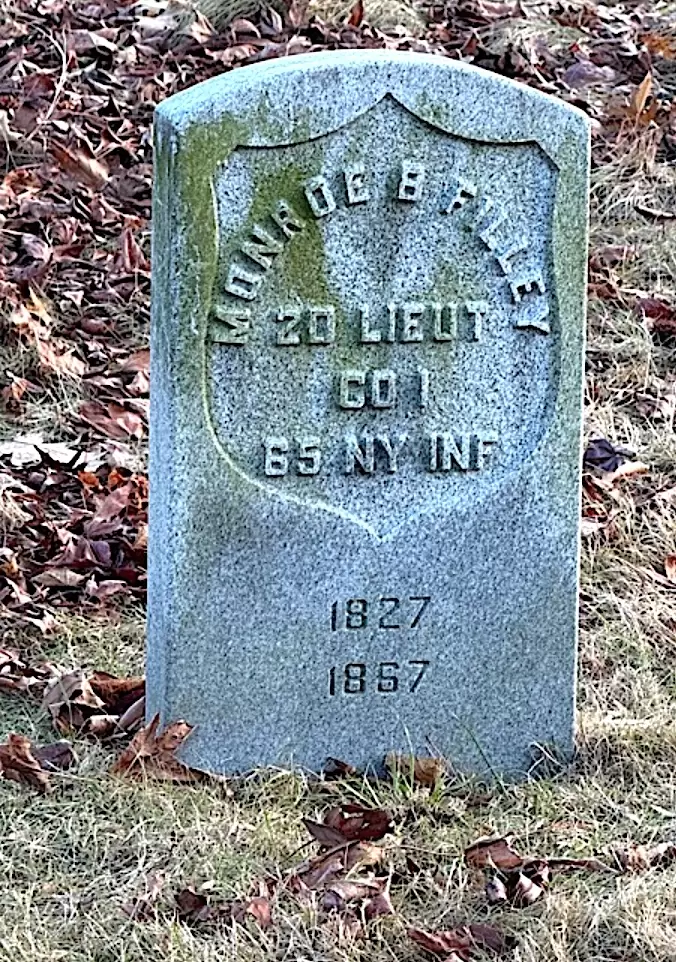
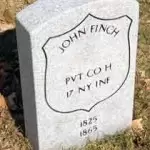
FINCH, JOHN (1825-1865). Private, 17th New York Infantry, Company H. A native of Ireland, he resided at 358 Washington Street in Manhattan when he enlisted at New York City on February 22, 1865. Finch mustered immediately into the 17th New York, and died of congestion of the lungs at DeCamp Hospital on David’s Island, New York Harbor, on April 16 of that year. Section 115, lot 13536 (Soldiers’ Lot), grave 102.
FINLEY, GEORGE F. (1844-1911). Corporal, 5th New York Infantry, Company H. Finley, a Manhattan native and a wheelwright by trade, was 5′ 7½” with brown eyes and black hair. After he enlisted as a private at New York City on April 25, 1861, he mustered into the 5th on May 9, and was detailed as the company’s cook that July. He was wounded in the left thigh at Second Bull Run, Virginia, on August 30, 1862, and treated in Washington, D.C., at Carver Hospital. Finley returned to the regiment that November, was promoted to corporal on January 25, 1863, and mustered out on May 14, 1863, at New York City.
As per the censuses of 1880, 1900, and 1910, Finley worked as a wheelwright. In 1879, his application for an invalid pension was approved under certificate 191,601. His obituary in the Brooklyn Daily Eagle, which confirms his Civil War service, indicates that he also served in the Quartermaster’s Department during the Spanish-American War. In addition, he belonged to the 5th Veterans’ Association and the Brooklyn City Post #233 of the G.A.R. He last lived at 494 Halsey Street in Brooklyn. In 1912, his wife applied for and received a widow’s pension, certificate 736,012. Section 80, lot 1973.
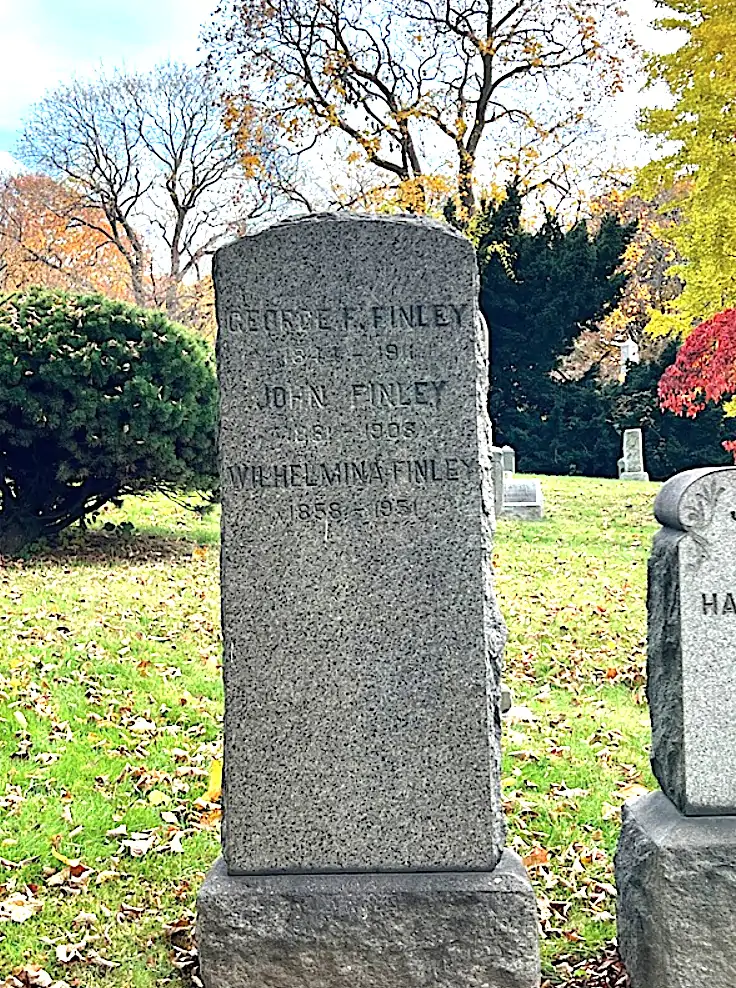
FINLEY, SAMUEL (1838-1885). Surgeon’s steward, United States Navy. Born in New York City, Finley, an African-American who was 5’9″, worked as a field-hand and laborer before enlisting as a seaman at Boston, Massachusetts, on March 12, 1862, and mustering immediately into the United States Navy. He served on the USS Ohio, the Baron DeKalb, and the Lafayette, first on January 1, 1864, and again on March 31 of that year. At some point he became a surgeon’s steward, and was discharged from the Lafayette on March 12, 1865. His last address was 240 South 5th Street in Brooklyn. His death was due to phthisis. Section 164, lot 14882.
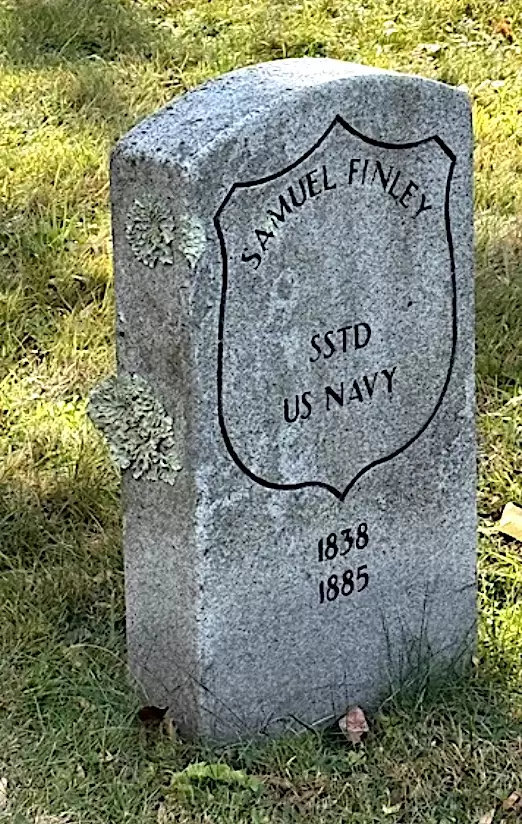
FINLEY, THOMAS K. (1845-1890). Ordinary seaman, United States Navy. Finley, who was born in Scotland, entered the United States Navy as a second class boy at New York City on October 26, 1862, rose to ordinary seaman at some point, and served aboard the USS Oneida and USS North Carolina. He saw action at Vicksburg, Mississippi, at New Orleans, Louisiana, and at Mobile Bay, Alabama, where he was wounded in both legs. He was discharged for disability at Philadelphia, Pennsylvania, on April 12, 1865. An affidavit from his brother in 1890 confirms his service under Admiral Farragut at New Orleans, Vicksburg, and Mobile Bay. In July 1890, he applied for a Navy invalid pension citing wounds in the hip and kneecap that was granted under certificate 16,646. His last address was 223 Avenue C in Manhattan. He died of an aneurysm in November 1890, with the pension awarded to his widow, Mary A. Finley, certificate 7,477. Section B, lot 11005, grave 363.
FINNEGAN (or FINNIGAN), WILLIAM (1834-1875). Private, 15th New York Cavalry, Company D. Of Irish origin, Finnegan enlisted at Brooklyn as a private on January 21, 1864, the same date that he mustered into the 15th New York Cavalry. He was discharged for disability on August 25, 1864. The Brooklyn Directories for 1868 and 1871 list his occupation as “driver.” According to his obituary in the New York Herald, he belonged to the Odd Fellows and the Woodbine Lodge #275; members of those organizations were invited to attend his funeral. His last residence was 266 Columbia Street in Brooklyn. The cause of his death was consumption. Section 190, lot 17722.
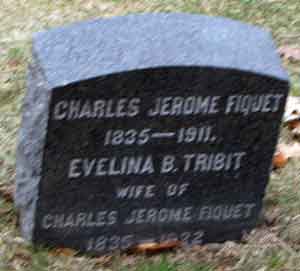
FIQUET, CHARLES JEROME (1835-1911). Private, 2nd Battalion, Alabama Light Artillery, Company F; Lumsden’s Battery Confederate States of America. Fiquet was born in New York. His brother, Dominique Doux Fiquet, a lawyer, obtained a degree from the University of Alabama at Tuscaloosa in 1855; that entry indicates that Dominique’s father was named Charles J. Fiquet. Fiquet served with the 2nd Battalion of the Alabama Light Artillery and in Lumsden’s Battery, a unit organized in Tuscaloosa, Alabama. No other details about his service are available. He received a pardon by order of President Andrew Johnson on July 18, 1865. At the time of his pardon, he was a resident of Tuscaloosa, Alabama, and employed in the clothing business.
On January 29, 1870, The New York Times announced Fiquet’s marriage to Evelina Tribit. As per the census of 1880, he was a broker. The New York City Directory published in 1885 listed him as a clerk. His last residence was 2259 Creston Avenue in the Bronx. His death was caused by myocarditis. Section 76, lot 5808.
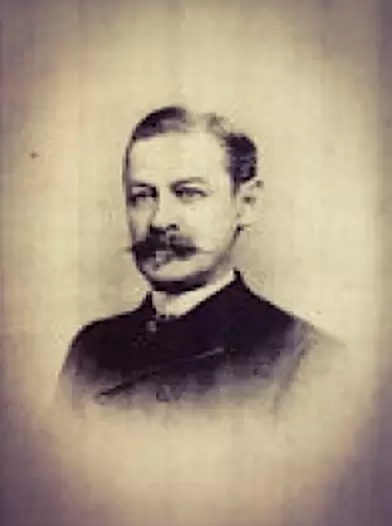
FISCHER, FREDERICK F. (1824-1874). Captain, 178th New York Infantry, Companies I and C; sergeant, 29th New York Infantry, Company E. Fischer, who was born in Germany, was a tailor according to the 1860 census. During the Civil War, he enlisted as a private at New York City in 1862, mustered into the 29th and at muster out, achieved the rank of sergeant. As per his muster roll, he was 5′ 8″ tall with gray eyes, brown hair and a light complexion. On August 31, 1863, he re-enlisted as a private at New York City, mustered into Company I of the 178th New York on September 3, and was promoted to corporal on October 1. On February 1, 1865, he transferred into Company C and was discharged from military service on April 20, 1866, at Montgomery, Alabama. According to the National Park Service website, he left the 178th as a captain; it is unclear when he was promoted to that rank. The New York City Directory of 1868 and the census of 1870 indicate that he was a tailor. His last residence was 103 Delancey Street in Manhattan. He died from typhoid fever. Section 17, lot 17245, grave 1823.
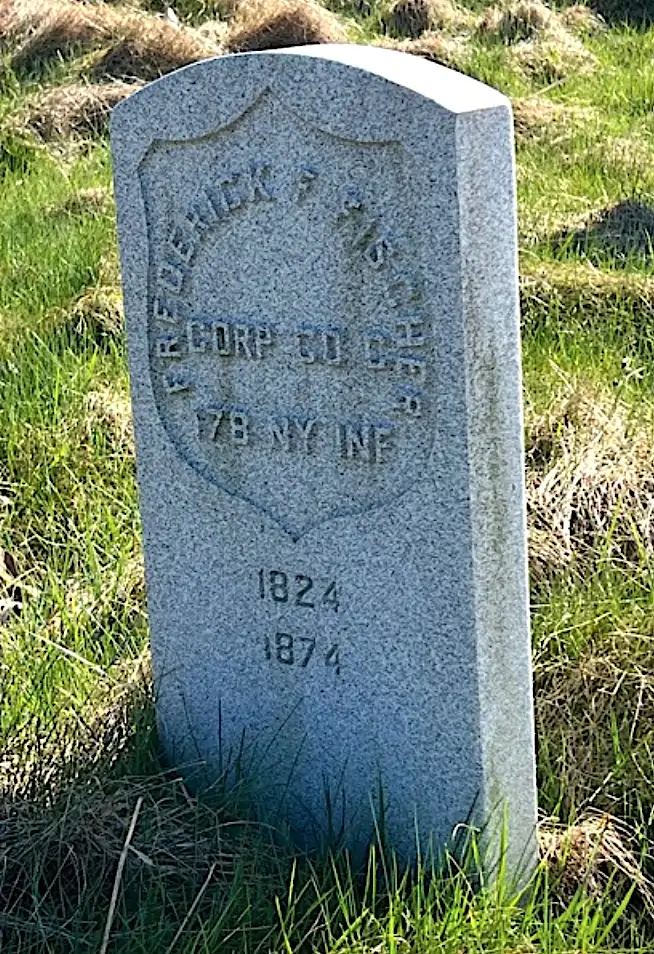
FISCHER (or FISHER), GEORGE (? – ?). Private, 11th Regiment, New York National Guard, Company D. After enlisting on May 28, 1862, at New York City, he mustered into the 11th National Guard that day, and mustered out after three months on September 16 at New York City. He subsequently served 30 days in the same regiment and company in 1863. Section ?, lot ?.
FISCHER, JOHN (1828-1879). Private, 15th New York Heavy Artillery, Company I. Two John Fischers, both born in Germany, served in Company I of the 15th New York Heavy Artillery. Therefore, it is possible but not certain that the John Fischer, who was born about 1831 and lived at the address in the Green-Wood database, enlisted as a private on February 24, 1864, at Fort Lyon, Virginia, and mustered into the 15th Heavy Artillery that day. A hostler, he was 5′ 7″ tall with gray eyes, dark hair and a dark complexion. He mustered out at Washington, D.C., on August 22, 1865. That John Fischer was a saloon keeper as per the 1868 New York City Directory and the census of 1870. His last residence was 123 Walker Street in Manhattan. Death was caused by Bright’s disease. Section 15, lot 17263, grave 1147.
FISHER, CHARLES A. (1831-1896). Private, 82nd New York Infantry, Company H. After enlisting as a private at New York City on July 26, 1862, Fisher immediately mustered into the 82nd, and deserted on September 10 of that year at Rockville, Maryland. He last lived in Brooklyn. He died from heart disease. Section 115, lot 20883, grave 1.
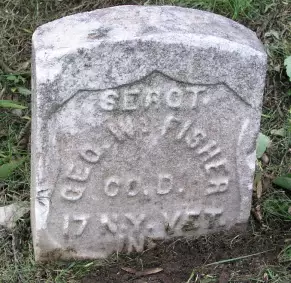
FISHER, GEORGE W. (1843-1916). Sergeant, 17th New York Infantry, Companies F and D. Born in New York City, he enlisted there on October 9, 1863, as a private, and mustered into Company F of the 17th Infantry on October 13. On November 1, 1863, he transferred into Company D and was promoted to first sergeant. After being reduced in rank to private on February 7, 1865, he was promoted to sergeant on March 1, 1865, and mustered out on July 13, 1865, at Alexandria, Virginia.
As per the census of 1880, Fisher lived in Montclair, New Jersey, and his occupation was listed as “wholesale drug store.” The censuses of 1900 and 1900 list him as a drug company manager. In 1905, his application for a pension was granted, certificate, 1,108,404. According to his obituary in the Evening Post, which confirmed his Civil War service and noted his participation in General Sherman’s March to the Sea, Fisher worked for Schieffelin & Co. for more than 30 years. That company, formerly at 170 William Street in Manhattan, which now distributes wines and spirits, began as a wholesale drug distributor in 1794 and introduced the sale of heroin and aspirin in the United States. He last resided at 115 Midland Avenue in Montclair, New Jersey. The cause of his death was myocarditis and arteriosclerosis. Calista Fisher, who is interred with him, applied for a widow’s pension in 1916, application 1,087,135, but there is no certificate number. Section 54, lot 4498.
FISHER, JOHN H. (1841-1895). Hospital steward, 84th New York (14th Brooklyn) Infantry, Company G. After enlisting as a private at Brooklyn on April 18, 1861, he mustered into the 14th on May 23, was promoted to hospital steward on April 20, 1862 and transferred to the Field and Staff, and mustered out at New York City on June 6, 1864. The census of 1880 states that he was employed as a clerk; the Brooklyn Directories of 1891 and 1894 note that he was a deputy collector. The Veterans Schedule of 1890 verifies his Civil War service as a hospital steward and also indicates that he was brevetted captain for “gallant service on the field.” In 1892, he applied for and received an invalid pension, certificate 920,069.
As per his obituary in the New York Herald, which confirms his Civil War service, Fisher belonged to the Veteran Volunteer Firemen’s Association, the Royal Arcanum and the Freemasons. In addition, his obituary in the Brooklyn Daily Eagle includes his membership in the 14th Regiment War Veterans’ Association. His last residence was 130 Vernon Avenue in Brooklyn. Fisher died of apoplexy. Clara Fisher, who is interred with him, applied for and was awarded a widow’s pension in 1895, certificate 529,239. Section 68, lot 493.
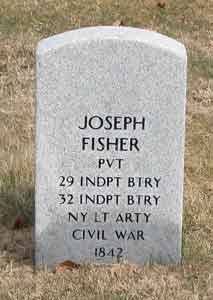
FISHER, JOSEPH (1842-1874). Private, 29th New York Light Artillery; 32nd New York Light Artillery. Born in Bavaria, Germany, Fisher was a baker by trade. He enlisted on March 31, 1864, at New York City, and mustered into the 29th Light Artillery (unknown company) that day. According to his muster roll, he was 5′ 5¾” tall with blue eyes, brown hair and a sallow complexion. He transferred into the 32nd New York Light Artillery (unknown company) on August 15, 1864, and mustered out on June 8, 1865, at Parkersburg, West Virginia. His last residence was on Pacific Street in East New York, Brooklyn. Phthisis pulmonalis was listed as the cause of his death. Section 55, lot 9366.
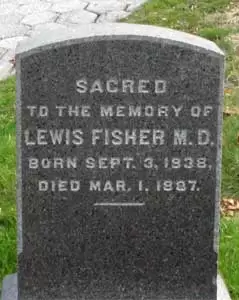
FISHER, LEWIS (1838-1887). Surgeon, United States Army. Fisher was born in Mobile, Alabama, and was a graduate of the College of Physicians and Surgeons. According to his obituary in The New York Times, he enlisted in the United States Army as a surgeon in 1861 and ran the Army Hospital at Chester, Pennsylvania, for the duration of the Civil War until his discharge in 1865. He settled in Morristown, New Jersey, after the War before relocating to New York City. His last residence was 14 West 29th Street in Manhattan. He died of consumption in Jacksonville, Florida, where he went in hopes of restoring his health. Section 22, lot 6975.
FISHER, OSCAR MELVILLE (1836-1902). Private, 10th New York Infantry, Company A. Born in Oxford, New York, he enlisted at New York City on October 28, 1861, mustered into the 10th New York, and was discharged for disability on January 12, 1863, at Convalescent Camp. According to his obituary in the newsletter of the Northern Christian Advocate, which confirmed his military service, he was employed as an officer at the United States Custom House in New York City soon after the War and remained at that job throughout his life for thirty-six years. He was a member of Ulysses S. Grant Post #327 of the G.A.R. His application for an invalid pension was granted, certificate 367,394.
Well-respected in his community for his faithfulness and loyalty, Fisher was a steward at the Hanson Place United Methodist Episcopal Church in Brooklyn. His death was caused by nephritis. As per his obituary in the Brooklyn Daily Eagle, members of his G.A.R. Post were requested to assemble in full uniform with white gloves and crepe on their left arms in preparation for his funeral. He last lived at 58 Rutland Road in Brooklyn. Sue M. Fisher applied for and received a widow’s pension in 1902, certificate 543,640. Section 196, lot 31118, grave 3.
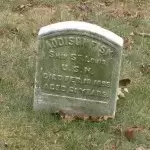
FISK, ADDISON (1833-1895). Acting gunner, United States Navy. A New York native, Fisk enlisted in the United States Navy and served on board the USS Richmond as an acting gunner. That vessel was part of the Gulf Blockading Squadron. His tombstone notes his Naval service on the USS St. Louis, an ironclad commissioned in 1862, which sunk in 1863. Other details are unknown. In addition, he was an acting gunner on the USS Richmond in 1865.
The 1870 census indicates that Fisk was cigar maker with a personal estate of $150; the census of 1880 and New York City Directories state that he was employed as a teamster. He received a pension from the Navy, certificate 12,616. His last residence was 1180 Gates Avenue, Brooklyn. Nephritis claimed his life. Suzanna (Susannah, Susanna) Fisk, who is interred with him, was granted a widow’s pension, certificate 11,637. Section 189, lot 16313, grave 6.
FISK (or FISKE), SAMUEL NELSON (1837-1886). Surgeon, 25th New York Infantry; acting assistant surgeon, United States Navy. After enlisting as a surgeon at New York City on May 20, 1861, he was commissioned into the Field and Staff of the 25th New York on June 28, and resigned his commission on December 11 of that year. Subsequently, Fisk enlisted in the United States Navy and was appointed as an acting assistant surgeon on May 28, 1862. He served on board the USS Braziliera and USS E. B. Hale until his resignation was accepted on February 2, 1864. He wrote on January 25, 1864, “Important reasons of a domestic nature render it impossible for me to continue any longer in the service with justice to my family, and I would therefore earnestly request that my resignation be accepted. Were it not for the reasons above alluded to, my desire would be to serve until the termination of this struggle, but a proper regard for the welfare of my family prevents me from so doing, and urges upon me the great necessity of now remaining at home.” After the War, he worked as a New York City sanitary inspector. He was awarded a pension from the Navy, certificate 12,021. His last residence was 184 South 9th Street in Brooklyn. He died of apoplexy. Section 159, lot 15895.
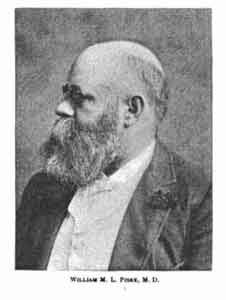
FISKE, WILLIAM M. L. (1841-1904). Assistant surgeon, United States Army; rank unknown, 47th Regiment, New York State National Guard, Company A. A New Yorker by birth, Fiske entered Bellevue Hospital Medical School in 1859 but left in 1862 to serve the Union. According to his obituary in The New York Times, he enlisted in 1862 and served in Company A of the 47th New York. He then returned to medical school from which he graduated in 1863, and obtained another degree from the New York Homeopathic College the following year. Returning to service, he was an assistant surgeon in the United States Army until the end of the conflict.
After the War, Fiske became a prominent physician who was president of the staff of the Brooklyn Homeopathic Hospital, a founder of the Eastern District Hospital, and one of the organizers of the Training School for Nurses of the Brooklyn Maternity Hospital. In addition, he was president of the New York State Homeopathic Society, a member of the Board of Examiners and Board of Regents. Among the civic organizations to which he belonged were the Hanover and Union League Clubs and the Freemasons. His last residence was 1140 Dean Street, Brooklyn. Fiske died of myocarditis. His remains were moved to the current location on April 29, 1905. Section 147, lot 31925, graves 3 and 4.
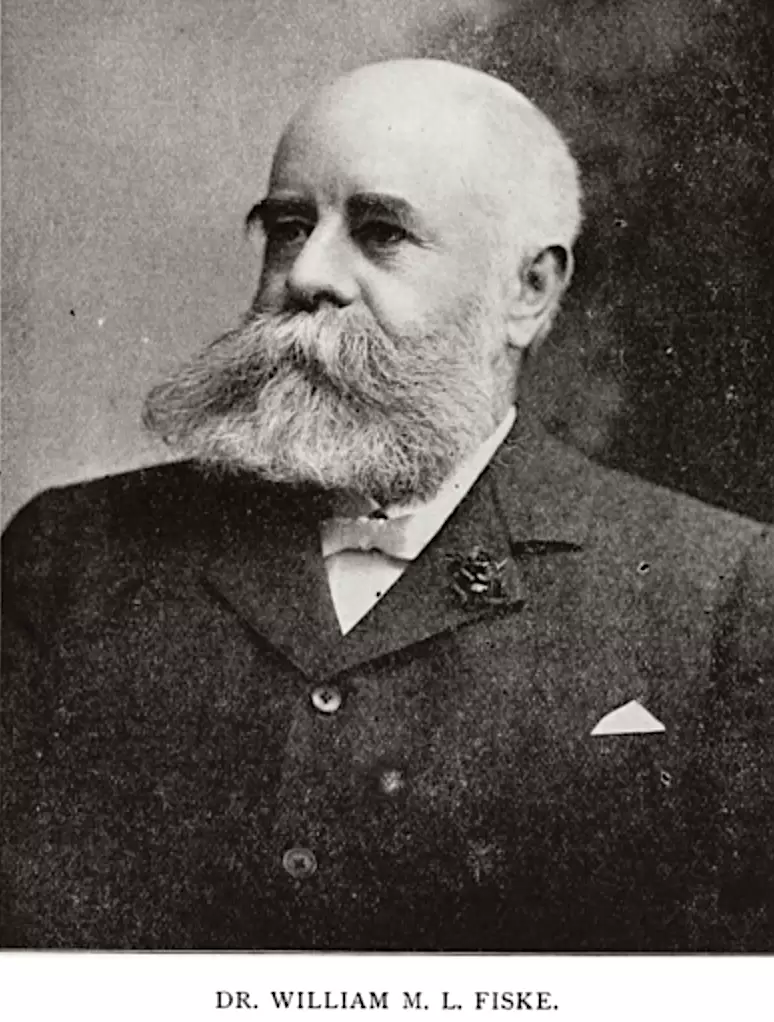
FITCHETT, GEORGE H. (1842-1897). Private, 71st Regiment, New York State Militia, Company D. A Brooklyn native, Fitchett served for three months with the 71st Regiment during its activation from July through October 1861. The Veterans Census of 1890 confirms his Civil War service. As per his obituary in the Brooklyn Standard Union, he was treasurer of Hyde and Behman’s Theatre for 20 years and then organized the American Bill Posting Company. His obituary in the Brooklyn Daily Eagle notes that he was a Freemason and member of the Citizens of America Council of the National Provident Union, a fraternal order and patriotic organization. He last lived at 573 Carlton Avenue in Brooklyn. He died of heart disease. Originally in lot 8840 in June 1897, his remains were moved to the present site on September 3 of that year. In 1897, Margaret Fitchett, who is interred with him, applied for and received a widow’s pension under certificate 470,857. Section 201, lot 29773, grave 2.
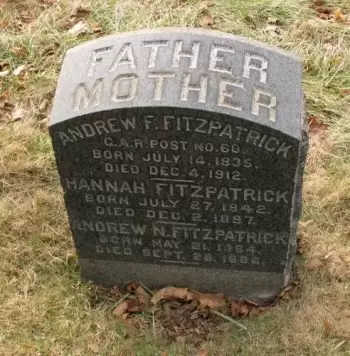
FITZPATRICK, ANDREW F. (enlisted as FOSTER, ANDREW) (1835-1912). Private, 82nd New York Infantry, Company G; 27th Connecticut Infantry, Company B. Fitzpatrick, a New York City native, enlisted there as a private on June 16, 1861, and mustered into the 82nd New York the next day. His muster roll indicates that he was dropped from the rolls but gives no further explanation. His pension record indicates an alias of Andrew Foster. Under that assumed name and a New Haven residency, he enlisted as a private on October 16, 1862, and mustered into the 27th Connecticut two days later. He was taken as a prisoner of war at Chancellorsville, Virginia, on May 3, 1863, paroled eleven days later at an unknown place, and mustered out on July 27 at New Haven, Connecticut.
The census of 1880 indicates that he “works in umbrellas”; the 1884 Brooklyn Directory lists him as a parasol-maker and the 1900 census identifies his occupation as “umbrella frame maker.” The Veterans Schedule of 1890 confirms his Civil War service. His 1892 application for an invalid pension was granted, certificate 861,545. Fitzpatrick’s membership in G.A.R. Post #60 is inscribed on his tombstone. As per his obituary in the Brooklyn Standard Union, the G.A.R. held a funeral service for him. He last lived at 260 36th Street in Brooklyn. He died of complications from a fracture. Section 2, lot 5499, grave 2186.
FLAGG, HENRY F. (1813-1864). Major and additional paymaster, United States Volunteers Paymaster’s Department. Massachusetts-born, Flagg enlisted as a major on November 26, 1862, was immediately commissioned into the United States Volunteers Paymaster’s Department with a promotion to major and additional paymaster on that day, and died of disease on May 23, 1864. Section 106, lot 8112.
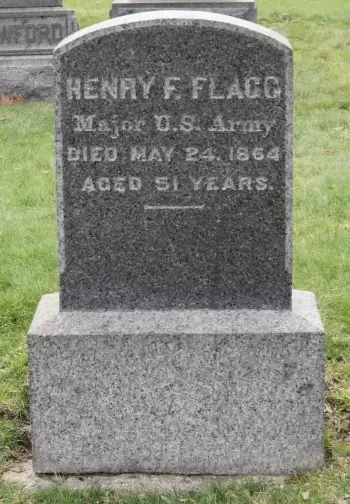
FLAMMER, EMANUEL A. (1838-1915). Private, United States Marines. Flammer was born in Philadelphia, Pennsylvania. He had a fair complexion, blue eyes and brown hair, and was employed as a machinist. After he enlisted at the Brooklyn Navy Yard on September 12, 1861, he served aboard the USS Lancaster, and at Brooklyn, Philadelphia, and Pensacola, Florida, before his discharge at Pensacola on September 23, 1865. The census of 1880 states that he was a furniture dealer; his family’s furniture business was located at 110 Division Street in Manhattan as per the New York City Directory of that same year.
Beginning in 1904, Flammer received a Navy pension, certificate 20,110. At the time of his pension application, he was 5’4″ tall and 170 pounds. He claimed that his rheumatism, bronchitis and impaired sight stemmed from exposure to wet and cold during his four and a half years of military service. The doctor’s report on his pension record notes that the impairments totaled 10/18 disability. According to his obituary in The New York Times, in 1850 his father owned a part of College Point, New York, that was known as Flammersburg. He last lived at 2161 Eighth Avenue in Manhattan. Arteriosclerosis caused his death. His remains were moved to this location on June 13, 1916. Section 17, lot 14888, grave 1353.
FLECK, PHILIP (1829-1875). Private, 11th Regiment, New York State National Guard, Companies C and E. A German native and a tailor by trade according to the New York City Directory for 1857-58, Fleck enlisted as a private at New York City on May 28, 1862, mustered into Company C of the 11th Regiment that same day, and was transferred into Company E before he mustered out three months later on September 16 at New York City.
After the War, he returned to his employment as a tailor and was still working until he died of pneumonia according to Trow’s New York City Directory published in 1876. His last address was 164 Delancey Street in Manhattan. In 1877, his wife, Maria Fleck, applied for a widow’s pension, application 255,901, but there is no certificate number. Section C, lot 19784.
FLEMING, GEORGE (1836-1883). Private, 39th New York Infantry, Company G. Originally from England, Fleming enlisted as a private at New York City on December 8, 1863, and mustered immediately into the 39th New York. Listed as absent and sick on August 14, 1864, he was absent when his company mustered out on an unstated date. He last lived at 22 Bleecker Street in New York City. He died of phthisis. Section 14, lot 4969, grave 159.
FLEMING, WILLIAM (1840-1913). Corporal, 56th Regiment, New York State National Guard, Company K. Fleming was a corporal for the 56th Regiment for 30 days in 1863. He was discharged at Brooklyn on July 24 of that year. As per his obituaries in the Brooklyn Daily Eagle and The Sun, he was active in the Mt. Olivet Presbyterian Church where he held the position of elder and treasurer. Employed in the paint and decorating business, he also belonged to many fraternal organizations including the Odd Fellows and the Freemasons. In addition, he belonged to the Veteran Volunteer Fire Department of Brooklyn and the Society of Old Brooklynites. He last lived at 257 Prospect Place in Brooklyn. His death was caused by pneumonia. Section J, lot 33890.
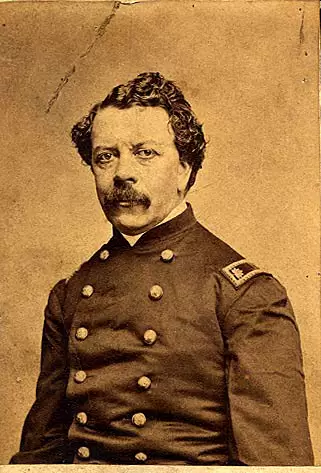
FLEMING, WILLIAM MARBURY (1817-1866). Paymaster, Union Army. Born in Danbury, Connecticut, he made his acting debut as Shylock in New York City in 1839. In the ensuing years he appeared on stages in Philadelphia, Kingston in Jamaica, New York City, and New Orleans, and managed theaters in Albany, New York, and Boston, Massachusetts. As per his passport application of 1857, he was 5′ 8¾” tall with hazel eyes, dark hair, fair complexion, small mouth, straight nose, round chin and oval-shaped face.
When the Civil War began, he gave up his business interests, and served as paymaster on the staff of General William T. Sherman for five years, taking part in the March to the Sea. He mustered out in March 1866, and died two months later from injuries he had received while in the Army. Section 182, lot 15145.
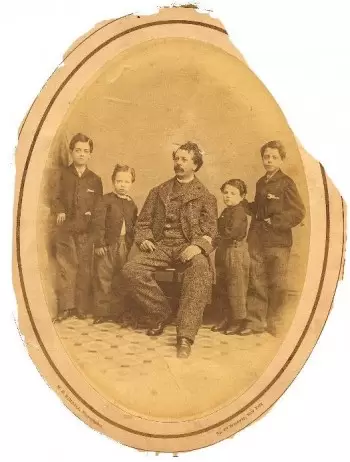
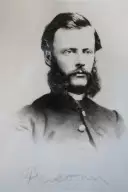
FLETCHER, DAVID B. (1839-1916). Captain, 48th New York Infantry, Companies A, F, C, and B. Born in Essex County, New York, he enlisted at Brooklyn as a private on March 11, 1862, and mustered into Company A of the 48th New York that day. A printer, he was 5′ 10″ tall with blue eyes, light hair and a fair complexion. He was promoted to corporal, wounded at Morris Island, South Carolina, on July 10, 1863, taken as a prisoner of war that same day, and paroled. On July 18, 1863, he was promoted to sergeant. Fletcher re-enlisted on March 31, 1864, rose to sergeant major and second lieutenant on July 15, 1864, and assumed the latter position when he was transferred that day to Company F. Fletcher became a first lieutenant on December 17, 1864, effective upon his transfer to Company C on December 31. He quickly attained the rank of captain on January 15, 1865, effective upon his transfer to Company B. On May 15, 1865, he was discharged. As per his obituary in the New York Herald, he was imprisoned three times during the Civil War at three different Southern prisons.
Fletcher had six children who were born after the Civil War. According to the Brooklyn Directory of 1878, he was a shirt-maker; the census of 1880 identifies his occupation as shirt-cutter and the census of 1900 states that he was employed in the men’s shirts business. In 1904, he applied for and was granted an invalid pension, certificate 1,084,276. Fletcher was a member of Ulysses S. Grant Post #327 of the G.A.R. He last lived at 382 8th Street in Brooklyn. His death was attributed to kidney-related “suppression of urine.” Agnes Fletcher, who is interred with him, applied for and received a widow’s pension in 1916, certificate 814,816. Section 20, lot 9738.
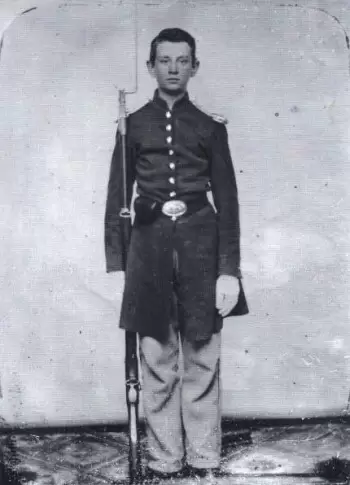
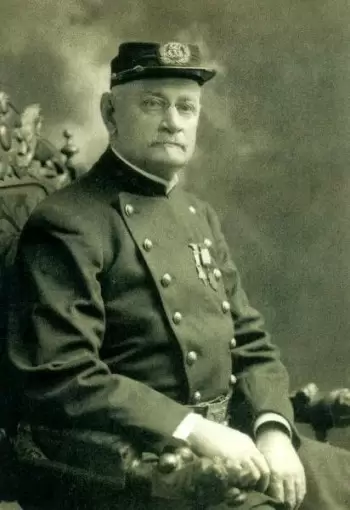
FLETCHER, JR., JAMES CHARLES (1849?-1911). Private, 5th New York Heavy Artillery, Company K. Fletcher was born in Brooklyn. Although Green-Wood records suggest a birth year of 1849, that is most likely incorrect because his descendant indicates that he served in the 5th New York Artillery with his younger brother, Samuel George Fletcher (see). As per soldier records, he enlisted at Brooklyn as a 24-year-old private on February 12, 1864, mustered into the 5th New York Heavy Artillery on that day, and mustered out on July 19, 1865, at Harpers Ferry, West Virginia. He last lived at 66 State Street in Brooklyn. The cause of his death was phthisis. Section 59, lot 1474, grave 94.
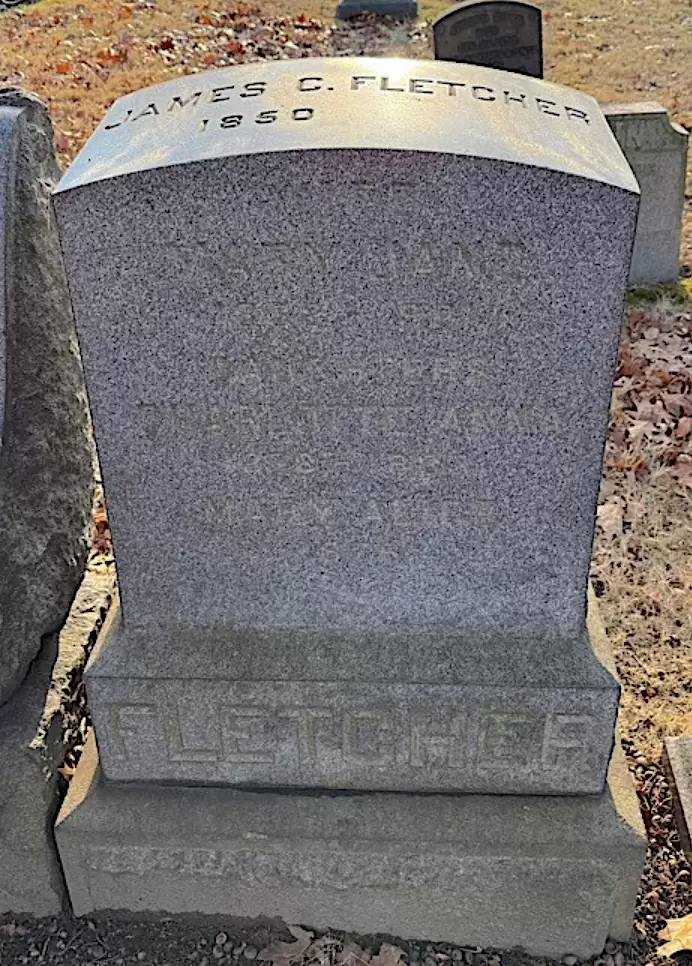
FLETCHER, SAMUEL GEORGE (1847-1920). Corporal, 5th New York Heavy Artillery, Company D. Fletcher, who was 5’10” with a fair complexion, enlisted at Brooklyn as a private on February 18, 1862, and mustered into the 5th Heavy Artillery that same day. According to a descendant, his brother, James C. Fletcher (see), also served in the 5th Heavy Artillery. He re-enlisted on February 18, 1864, and was paid a $100 bounty as a veteran volunteer. After being shot in the face at Piedmont, Virginia, on June 5, 1864, (the ball never being removed), he lay on the battlefield for three days. He was captured on June 10, 1864, while hospitalized in Staunton, Virginia, and imprisoned at Andersonville, Georgia, in early July of that year. During his incarceration, Fletcher recalled having no rations for three days that August. After being transferred to Camp Lawton Prison in Millen, Georgia, on November 11, 1864, he was exchanged on December 10 at Florence, South Carolina, and rejoined the Union lines five days later at Camp Parole, Annapolis, Maryland. At that time, he weighed only 96 pounds. After he was promoted to corporal on March 20, 1865, he rejoined his unit in May and mustered out at Harpers Ferry, West Virginia, on July 19, 1865.
After the War, Fletcher worked as a hat maker at the Knox Hat Company for 25 years, was a quartermaster of the Ulysses S. Grant G.A.R. Post #327, and a member of the Veterans of Foreign Wars. He applied for and was granted an invalid pension. In 1881, he noted in a request for an increased pension that he had no medical attention while imprisoned and that his tear duct never functioned properly after the injury making it difficult to pursue his trade that demanded good eyesight. On April 29, 1914, he returned to Andersonville as a surviving prisoner to dedicate a New York monument at the cemetery there, and received a medallion in recognition of his service to the Union. He described his treatment as a member of the State delegation as “grand.” Fletcher’s descendant notes that Sam Fletcher was the last curator of the G.A.R. Museum in Brooklyn. His last residence was 819 Bergen Street, Brooklyn. He died from Addison’s disease. Hilda Fletcher applied for and received a widow’s pension in 1920, certificate 899,389. Section 59, lot 1474, grave 75.
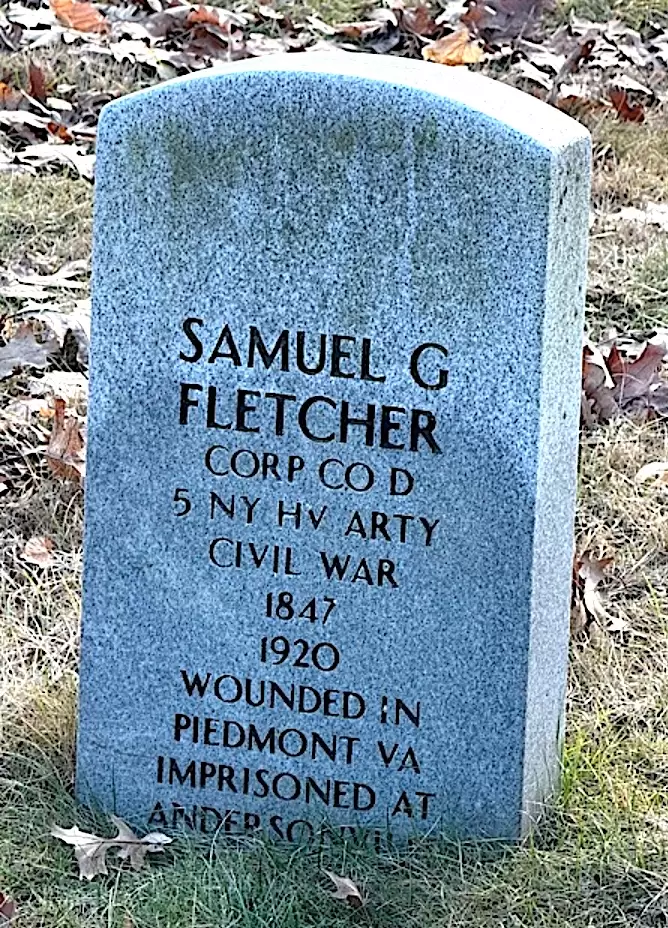
FLOOD, EDWARD (1826-1891). Corporal, 53rd New York Infantry, Company E; 132nd New York Infantry, Company E. Born in Ireland, he enlisted as a private at New York City on May 31, 1862, immediately mustered into 53rd New York, and transferred into the 132nd New York on September 10 of that year. At some point, he was promoted to corporal. On June 8, 1865, he mustered out at New Berne, North Carolina.
The censuses of 1870 and 1880 list his occupation as watchman. The Veterans Schedule of 1890 confirms his Civil War service. Flood last lived at 102 Prince Street in Brooklyn. Enteritis caused his death. In 1891, his widow, Mary Flood, applied for and received a pension, certificate 305,168. Section 109, lot 45.
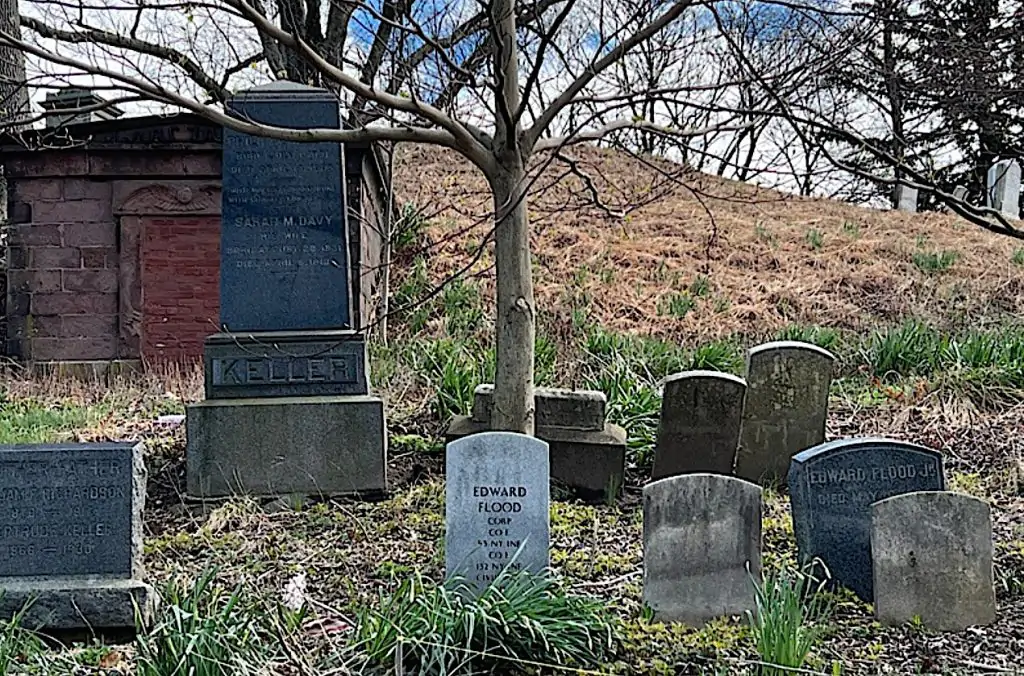
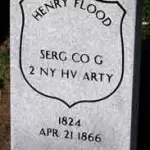
FLOOD, HENRY BARTON (1824-1866). Sergeant, 2nd New York Heavy Artillery, Company G. Sergeant, 2nd New York Heavy Artillery, Company G. Of Irish birth, Flood’s obituary in the New York Sun notes that he was the grandson of Reverend Henry Flood of Kilkenny, Ireland, an eloquent speaker and advocate of an independent Irish Parliament. During the Civil War, he enlisted at New York City as a corporal on October 5, 1861, and mustered in ten days later. As per his muster roll, he was 5′ 9″ tall with brown eyes, black hair and a dark complexion. Captain Henry Benson singled out Flood for distinguished conduct in his report from New Bridge, Virginia, on May 31, 1862, and on July 9 from Harrison’s Landing, Virginia, in describing the recent engagement at Malvern Hill in that state. He was reduced in rank to a private at some point but was reinstated as a corporal on July 1, 1863, and on November 1, 1863, was promoted to sergeant. On December 29, 1863, he re-enlisted and on January 1, 1864, his rank was reduced to private. According to his muster roll, he deserted on March 18, 1864, but a court-martial concluded that he was not guilty of desertion but was guilty of absence without leave. He was wounded in Petersburg, Virginia, on June 18, 1864. On September 29, 1865, he mustered out in Washington, D.C. He last lived in Flatbush, Brooklyn. He died from cancer of the liver and stomach. Margaret Flood applied for and was awarded a widow’s pension on October 22, 1866, certificate 127,597. Section 115, lot 13536 (Soldiers’ Lot), grave 106.
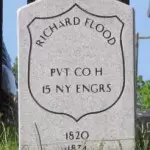
FLOOD, RICHARD (1820-1874). Private, 15th New York Engineers, Company H. A native of Ireland, Flood enlisted as a private at New York City on June 7, 1861, and ten days later mustered into the 15th Engineers. Flood last lived in New York City at 553 West 36th Street. He died of congestion of the lungs. Section 15, lot 17263.
FLORENTINE, JR., ABRAHAM (1827-1862). Captain, 59th New York Infantry, Company K. A native New Yorker, he was an undertaker by occupation and a resident of 174 Canal Street in Manhattan. Florentine enlisted as a captain at New York City on August 1, 1861, and was commissioned into the 59th on October 30. Wounded at the Battle of Antietam, Maryland, on September 17, 1862, he succumbed to his wounds a month later on October 19. Rachel Florentine applied for and received a widow’s pension in 1862, certificate 23,342. Section 76, lot 8396.
FLYNN, GEORGE (1849-1898). Private, 8th Regiment, New York State Militia, Company F. In 1861, Flynn served for three months in the 8th Regiment with the rank of private. In 1862, he returned to the same company and regiment, now part of the New York State National Guard. He applied for and received a pension in 1882, certificate 832,955. His pension record also indicated that he served in Company G of the 71st New York but gives no details. His last address was 228 6th Street, Brooklyn. He died a victim of Bright’s disease. His widow received a pension, certificate 466,111. Section 148, lot 19797, grave 15.
FOE, EDWARD (1839-1879). Private, 84th New York (14th Brooklyn) Infantry, Company B. A native of New York City, Foe enlisted as a private at Brooklyn on April 18, 1861, and mustered into the 14th Brooklyn on May 23. He deserted from his unit on July 16, 1863, at Elkton Island, Maryland. His last address was 39 Brooklyn Avenue in Brooklyn. The cause of his death is listed as “atrophy of the liver.” Section 14, lot 19438, grave 1.
FOERTSCH, CONRAD (1828-1872). Private, 6th Regiment, New York State Militia, Company D. Born in Bavaria and naturalized on February 13, 1854, Foertsch was a butcher by trade. During the Civil War, he served as a private with the 6th New York Militia for three months in 1861. Foertsch is listed as a butcher in the 1872 New York City Directory. As per his obituary in the New York Herald, he was a Freemason and member of the Beethoven Maennerchor, a German singing society founded in New York in 1859; members of both groups were invited to his funeral. His death was caused by marasmus (severe malnutrition). His last residence was 296 Broome Street in Manhattan. Section 148, lot 20827.
FOGARTY, WILLIAM (1840-1904). Private, 1st New York Mounted Rifles, Companies H and G. Of Irish birth, he enlisted as a private at New York City on August 12, 1862, and mustered immediately into Company H of the 1st New York Mounted Rifles. His soldier and pension records indicate that he also served in Company G of that regiment but there is no date given for that transfer. He mustered out on June 12, 1865, at Richmond, Virginia.
According to the census of 1880, Fogarty was a carpenter by trade. He became a member of the Grand Army of the Republic’s Post #27 in New York City on May 12, 1882. In 1890, his application for an invalid pension was approved, certificate 826,285. The Veterans Schedule of 1890 confirms his Civil War service. In 1897, he was admitted to the United States Home for Disabled Soldiers in Togus, Maine. At the time of his admission, he was 5′ 9″ tall with blue eyes, gray hair and a fair complexion. He was sent home to Brooklyn on July 8, 1903. His name is listed on the G.A.R. Mortuary Table of 1904. His last residence was 105 North 9th Street in Brooklyn. The cause of his death was dysentery. Fogarty, who is interred with him, applied for and was awarded a widow’s pension in 1904, certificate 576,489. Section 14, lot 19438, grave 99.

FOGG, WILLIAM (1817-1884). Patrolman during the New York City Draft Riots. Originally from Cambridgeport, Massachusetts, he was a clerk in Boston before he moved to New York City. He soon opened an upholstery store at 24-26 Fulton Street in Manhattan and was one of the first to import goose feathers from Russia. At the start of the War, he worked for the government in his line of business. In 1863, he was a mounted patrolman who was on duty when the Draft Riots broke out in New York City in July of that year and took an active part in subduing the protest.
In 1866, Fogg relocated his business to Chatham Street, subsequently moving to Canal Street in 1876. A founding trustee of the Union Dime Savings Bank, he was also one of the directors of the Ninth National Bank. Additionally, he was a major stockholder in the Savannah Line of steamships and a member of the Old Guard. His last residence was 431 West 22nd Street in Manhattan. His death was caused by pericarditis, inflammation of the tissues surrounding the heart. Section 172, lot 14240.
FOGGO, WILLIAM (1839-1863). Artificer, 15th New York Engineers, Company A. A native of New York City and resident of 94 Perry Street in Manhattan, Foggo, a car-man, was 5′ 7″ tall with blue eyes, brown hair and a fair complexion. He enrolled at New York City as a private on August 30, 1862, mustered into the 15th Engineers that day, was promoted to artificer on an unspecified date, and died from tuberculosis and malarial fever at the regimental hospital at Falmouth, Virginia, on April 3, 1863. Section 13, lot 9334.
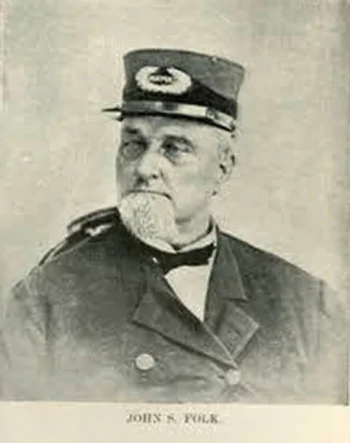
FOLK, JOHN SEWARD (1810-1885). Brooklyn Chief of Police, New York City Draft Riots. Born in Brooklyn in a farmhouse which is now the site of the Municipal Building, some biographies list Folk’s birth year as 1811, but his gravestone is inscribed “1810.” He was a carpenter before joining the Brooklyn City Watch, the first organized police force in the borough, in the 1830s. A large and powerfully-built man, he was renowned for his coolness in putting down the Bread Riot of 1837. The City Watch was composed of constables elected by the voters of Brooklyn. Elected head constable of the force, he remained in that position until 1851 when the Brooklyn Municipal Police was formed. He soon became Brooklyn chief of police, a position he held for almost 15 years. During 1854, he led the police during the Angel Gabriel Riots as well as during unrest among abolitionists and volunteer firefighters. While battling the firefighters, he was struck on the head with a wrench and bore a scar from that blow for the rest of his life.
During the Draft Riots in July 1863, Folk was called to Manhattan to join Inspector Daniel Carpenter to relieve the defenders of the New York Tribune office on July 13, and broke up the mob in City Hall Park. David Barnes in The Metropolitan Police, Their Services During Riot Week, Their Honorable Record reports that Inspector Folk, on his return to Brooklyn, heard that two African-Americans had been killed near the docks at Fulton Ferry. Upon inspecting the area, Folk found two African-Americans, one with a bloodied head and broken arm and the other with body bruises. He was unable to get a carriage to take the seriously injured man to the hospital, even with a police guard, and finally secured a fish wagon to transport the man, with sufficient guard, there. Folk returned to Brooklyn on July 15, 1863, where he saved the Brooklyn Daily Eagle office from rioters and together with 40 other officers, stood guard in the lecture room behind the church organ of the Plymouth Church when abolitionist Rev. Henry Ward Beecher (see) gave a Sunday sermon on July 19 of that tumultuous week.
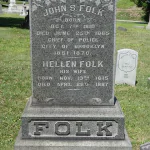
After the Civil War, the Board of Commissioners appointed Folk inspector for the Metropolitan Police Department with authority for the entire Brooklyn police force. He lost that position when the Brooklyn Board of Commissioners was formed in 1870. He was made an inspector in 1872 and superintendent a year later. Upon his death, a committee of New York Police Department captains was formed to arrange his funeral. His son, William H. Folk (see), was captain of the 12th Precinct in Brooklyn. He last lived at 170 Skillman Street in Brooklyn. He died from nephritis. Section 55, lot 14206.
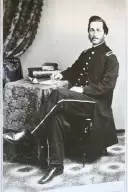
FOLK, WILLIAM H. (1837-1892). Major by brevet; captain, 173rd New York Infantry. He was born in Brooklyn where his father, John Seward Folk (see), was elected the first police chief of Brooklyn in 1851. He became a clerk in his father’s office in May 1856, and a patrolman two years later.
Folk was among the first to form the 173rd Regiment, known familiarly as the Metropolitan Police Brigade, on July 20, 1862, at Riker’s Island. On September 6, 1862, he was appointed as adjutant, and was commissioned into the Field and Staff of the 173rd New York on November 10, 1862. The regiment went to Louisiana in December of that year, then took part in expeditions to Placquemine and Indian Villages on February 5, 1863. He took an active role during the siege of Port Hudson, Louisiana, from May 19 through July 8, 1863. During the latter part of that siege, he served as the acting assistant adjutant general of the Third Brigade until late July when he returned to New York for recruiting duty. He was then detailed to David’s Island as the post adjutant. He was promoted to captain on August 7, 1865, when he returned to his regiment at Washington, D.C., and mustered out on October 18, 1865, at Savannah, Georgia.
After a celebratory march and reception by the citizens of Brooklyn on October 26, Folk returned to his job as a police officer and soon became a detective, according to his obituaries in the New York Herald and The New York Times. In 1867, he was brevetted major “for gallant and meritorious services in the late War.” Folk was assigned to the Central Office squad as detective for fifteen years. In 1881, he became a sergeant, then two days later a police captain and, as of June 26, 1881, was commander of the Atlantic Avenue Station. Active in Republican politics, he was also a trustee of the Brooklyn Police Mutual Benefit Association.
His obituary in the Brooklyn Standard Union on March 24, 1892, included a tribute by the officers of the Twelfth Precinct, of which Folk was the commanding officer. They said that Folk’s death was a loss to the public and the city at large “whose best interests he was always the champion.” Another article in the Brooklyn Standard Union that same day, “The Folks, Father and Son,” characterized William Folk as the ideal policeman and “true guardian of the peace of a great city” who learned much from his father, who was police chief at a time of great lawlessness. An article in the Brooklyn Standard Union on April 18, 1892, reported that veterans of the 173rd New York met to pay tribute to William Folk and remember his service in the Civil War. The veterans remembered Folk as a strict disciplinarian, accurate to every detail, loyal to his country and one whose private life was as exemplary as his public service. He last lived at 144 Van Buren Street in Brooklyn. His death was attributed to pneumonia. In 1892, Lydia Folk applied for and received a widow’s pension under certificate 517,189. Section 55, lot 14206.
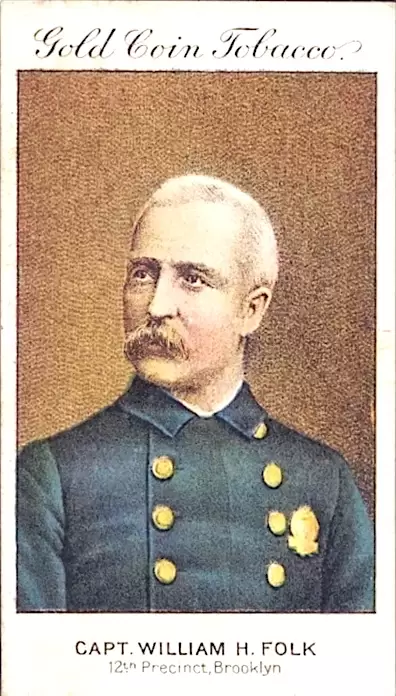
FOLWELL, CORTLANDT (or CORTLAND) (1842-1868). Sergeant, 3rd New York Infantry, Company G; private, 9th New York Infantry, Company H. A New Yorker by birth, Folwell was the manager of the Avonite Club at the time of his enlistment as a private at New York City on August 26. 1862. As per his muster roll, he was a clerk who was 5′ 8″ tall with gray eyes, black hair and a fair complexion. He mustered into the 9th New York three days later. His muster roll notes that he deserted from the hospital at Washington, D.C., on March 19, 1863, returned that month and returned to duty on April 20. Folwell was transferred into the 3rd New York on May 6, 1863, became a corporal on January 29, 1864, and was reduced to ranks on June 10. Folwell was promoted to corporal on May 11, 1865, to sergeant twelve days later, and was discharged on June 17, 1865, at Raleigh, North Carolina. He last lived at 9 Harrison Street in New York City. He died from phthisis. Section L, lot 18450.
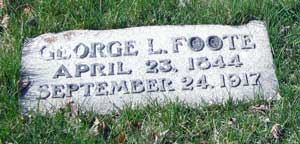
FOOTE, GEORGE L. (1844-1917). Private, 23rd Regiment, New York State National Guard, Company D. A native of Lee, Massachusetts, Foote served as a private with the 23rd Regiment when it was activated for 30 days in 1863. The censuses of 1900 and 1910 and the Brooklyn Directory of 1904 indicate that he was a manufacturer of electric supplies. The Electrical Record (Volume II, July 1907) reports that Foote, of Foote, Pierson & Company, obtained a patent for a lightning-arrester. An advertisement from his company at 82-84 Fulton Street in Manhattan shows that his business has a patent for the Morse-Graph, an apparatus that keeps a record of all signals that are transmitted and a “20th Century Key” for telegraph operators that transmits clearer and more solid signals.
Active in civic organizations, he belonged to several Masonic associations, including the Masonic Veterans; as per his obituary in the Brooklyn Daily Eagle, members of his lodges were invited to attend his funeral. His last residence was 107 Macon Street in Brooklyn. His death was attributed to chronic nephritis. Section 204, lot 348421, graves 1 and 2.
FOOTE, HENRY R. (1824-1889). First lieutenant and quartermaster, 82nd New York Infantry. A native of Massachusetts, he enlisted at New York City as a first lieutenant on May 28, 1861, and was commissioned into the Field and Staff of the 82nd New York as a first lieutenant and quartermaster that same day. He was dismissed on April 19, 1862. His name was attached to an undated advertisement in the New York Sun in 1862 requesting “good men” for the Ambulance and Sanitary Corps to apply at headquarters at 654 Broadway to get particulars about bounties, etc. In 1863, he wrote a 23-page book, “The Dead and Wounded Uncared for: A Brief Statement of the Fearful and Unnecessary Loss of Life on the Battle-field … Developing the Necessity of an Ambulance Corps …” In addition, he produced an exhibition drill by the Ambulance and Sanitary Corps demonstrating how the sick and wounded were tended to on the field and Foote’s hope that the corps could become a cavalry unit; the exhibition did not receive positive reviews from the audience. On February 23, 1864, his name was listed in another advertisement looking to raise four companies for the 165th Regiment (Second Duryee Zouaves). In addition to the bounties of $852 for veterans or $677 for new recruits, cash payments of $300 for passing surgeon (physical) and $150 before leaving for the regiment were promised as well as the distinctive uniform (a savings of $23) and relief tickets for families.
A man who wore many hats, Foote was a civil engineer who invented at his own expense and patented a device that converted petroleum to steam to produce heat. Articles in the Gloversville Intelligencer on June 25, 1867, and in the Lockport Journal & Courier on November 20, 1867, two New York newspapers, reported that the apparatus was being tested on a steamer, the USS Palos, at the Boston Navy Yard with the hope that, if successful, the device would save money and storage space and burn cleaner, thus becoming a replacement for coal. The Intelligencer story reported that oil from West Virginia, which was heavier than oil from Pennsylvania, was most suited for heating because it was non-explosive.
Although he was at one time a wealthy man who had been commissioner of patents at the office in Washington, D.C., district attorney in Washington, New York, and a judge in Seneca, New York, an article in the Utica Weekly Herald on December 25, 1877, shed light on a controversy in his life. That article reported that Foote had passed bad checks to John Cronin, a bookseller in Long Island City, for rare books that supposedly had belonged to Napoleon Bonaparte. Foote was interested in curiosities and, although was due to receive $10,000 from New York State for his patent for a furnace that burnt garbage, presented a worthless check in the amount of $510. Another article about the trial appeared in the Brooklyn Daily Eagle on December 20, 1877, noting that Foote claimed that his check, drawn on a Pennsylvania bank, was a “promissory note”; Cronin argued that Foote owed him the money or the books and that he had received neither. A guilty verdict was reached in ten minutes. The article in the Brooklyn Daily Eagle described Foote as a large man of commanding appearance, clear voice, high forehead and “unusually intelligent face” who chewed tobacco and was misty-eyed after the verdict was delivered and the sentence of two and a half years imprisonment was pronounced. The defense asked for leniency and time to appeal the decision. Subsequent articles in The New York Times on July 21, 1879, and in the New York Herald on July 28, 1879, reported that he had already served six months at Sing-Sing Prison. The articles went on to report that Foote applied for and was granted an exception on a writ of error and was required to post $5,000 bail. The New York Times stated that Foote ran the mess-room engine at the prison and if he continued his good behavior, could reduce his sentence by six months. Another news article in the Brooklyn Union Argus on February 19, 1879, which noted that Foote had to return to prison, identified the volumes in question as “The Music Français.”
On April 12, 1882, he addressed the Farmers’ Club at the Cooper Institute in New York City as per an article in the New York Herald. His presentation, “Utilizing Refuse and Garbage,” focused on his plan for New York City based upon his invention of a closed furnace that “cremated” or incinerated garbage, providing cleaner waters for New York Harbor, a healthier environment and manure for farmers as a by-product. The listing in the 1884 Brooklyn Directory notes that he had a school for steam engineering at 269 Eighth Avenue. His last residence was at 230 West 36th Street in Manhattan. He died from heart disease. In 1890, his widow, Linda Foote, was granted a pension, certificate 357,348. Section 59, lot 295, grave 19.
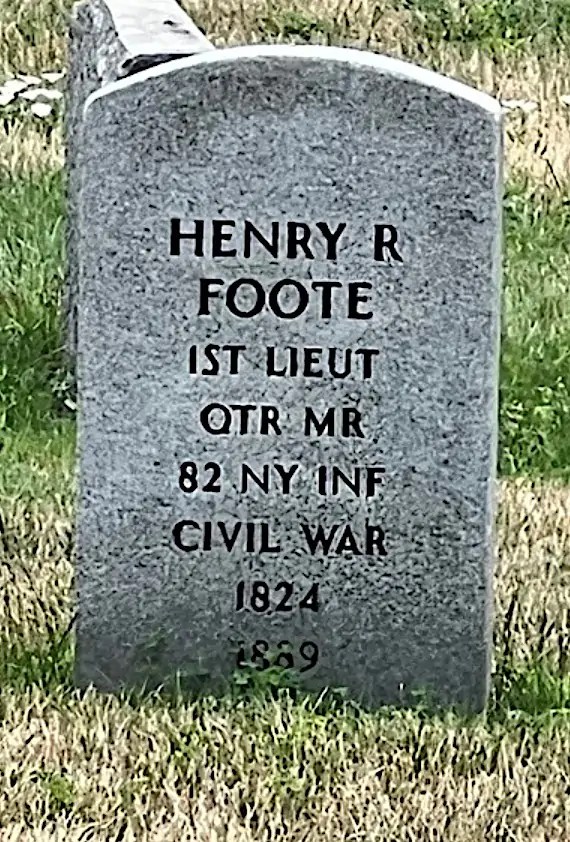
FOOTE, LEWIS RAY (1844-1905). Private, 61st New York Infantry, Company C. Born in South New Berlin, New York, Foote was a farmer who was 6′ tall with a light complexion and gray eyes when he enlisted at Hamilton, New York, on September 16, 1861, and mustered into the 61st New York. After being shot by a musket ball in the right thigh at the Battle of Fair Oaks, Virginia, on June 2, 1862, he was treated at the United States General Hospital in Portsmouth Grove, Rhode Island, and was discharged for disability on September 18, 1862, at Providence, Rhode Island. In 1863, he applied for and was granted an invalid pension, certificate 18,650.
In 1872, Foote was ordained as a Presbyterian minister and was installed as pastor of the Throop Avenue Presbyterian Church on December 20, 1873. The description on his passport application of 1902 indicates that he was 6’4″ tall with a high forehead, large mouth, firm chin, slightly gray hair and smooth-shaven face. An article about his funeral on December 23, 1905, in the Brooklyn Daily Eagle reported that about 2,000 people attended his funeral necessitating the use of an overflow chapel. He was lauded for his faithfulness, generosity toward poor churches, kindness and sincerity. The article notes that it took more than a half an hour for all the attendees to pay respects at his casket. Fellow pastors noted that Foote was a fine example for young preachers and as he watched Brooklyn grow from a small community to a place larger than some states, he rose to the challenge and accepted more responsibility. In addition, he was a member of the Young Peoples Association, a college fraternity, and the Ulysses S. Grant Post #327 of the G.A.R. At the time of his death, he lived at 523 Willoughby Avenue in Brooklyn. His death was caused by typhoid fever. His widow, Harriet A. Foote, applied for and received a pension in 1908, certificate 660,426. In 1945, the Throop Avenue Presbyterian Church merged with the Throop Memorial Rosedale Church in Rosedale, Queens, where a bronze tablet dedicated to Foote honors his memory today. Section 162, lot 15279, grave 4.
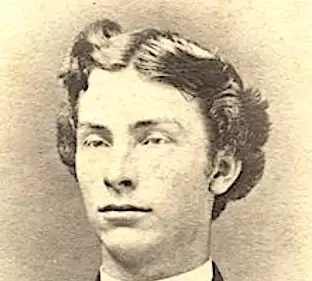
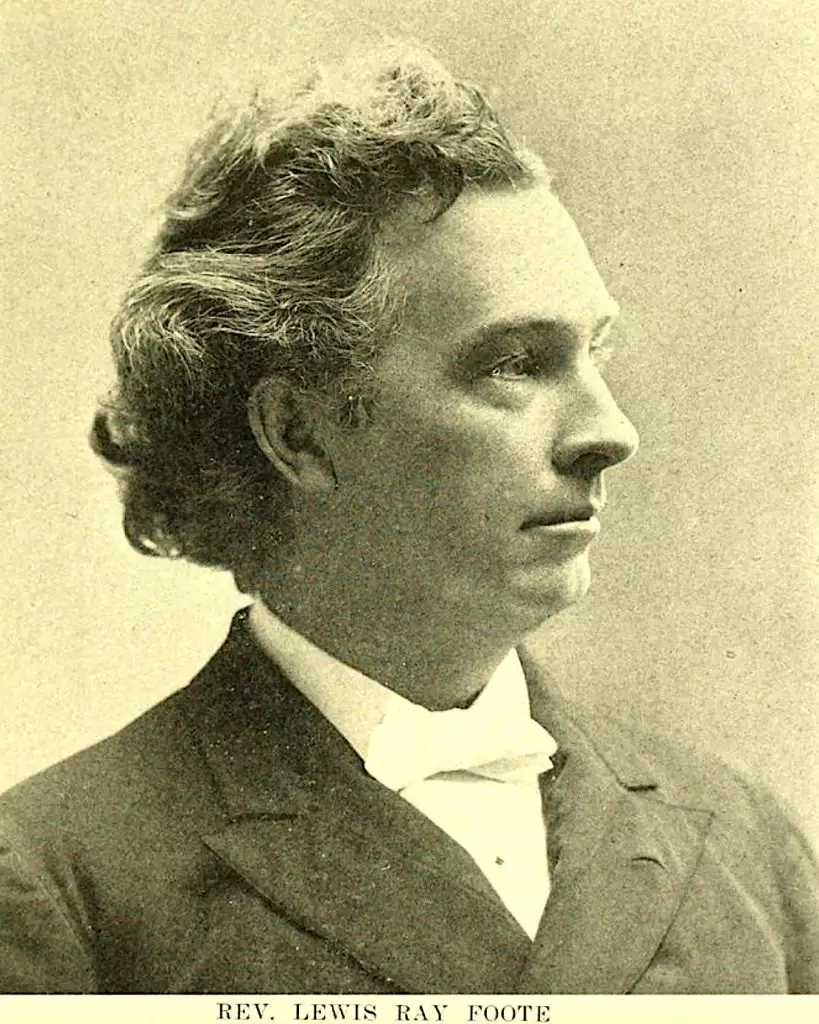

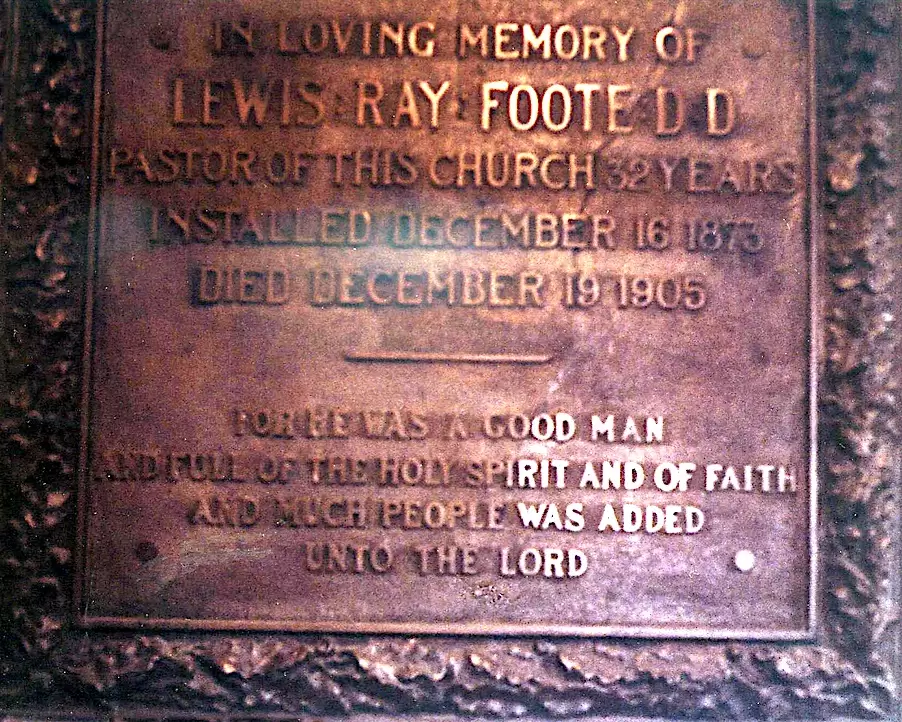
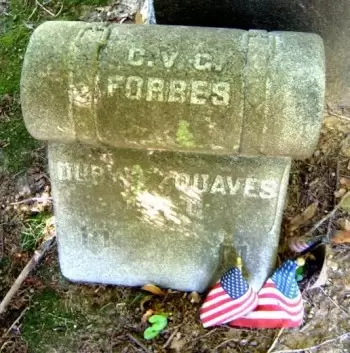
FORBES (or FORBS), COLIN (or COLVIN) VAN GELDER (1841-1912). Sergeant, 5th New York Infantry, Company G. Born in New York City, he entered service as a private on April 25, 1861, and mustered into Company G on May 9. He was 5′ 9″ with a light complexion, gray eyes, and light brown hair. At the time of his enlistment, he managed his father’s farm in Rahway, New Jersey, which he left abruptly necessitating his asking for a furlough a few months later to settle matters there. He was promoted to corporal on August 6, 1861. His descendant had his memoir from the engagement at Hanover Court House, Virginia (May 27, 1862), in which he wrote:
“…Fortunately, there was no necessity for us as the engagement had been won. So we went into camp in the field. By this time it was quite dark. After I had something to eat, I started out to get a canteen of water as mine was nearly out. In my rambling I came near the field hospital, being the house with a large yard enclosed by a fence. Right near the house was a very large table. Along the side and near the fence lay our wounded. There was a lighted lantern here and there which added to the dismal effect. Some of the men where they lay were calling, “Oh, doctor! Oh, doctor! Others, “Water! Water!” It was a heart rending noise. Sometimes it still rings in my ears. Hardened as I was, I had to get away from it.
When I had gotten my water I thought I would try to sleep. I was very tired. Near my Company I came across two men lying apart so another could creep in between. It seemed a good place for me, so in I went placing my blanket over the three of us. I slept like a log all night. Reveille call woke me. I pulled my blanket off, called my companions, “Come, get up! Roll call!” Not a stir did they make. It struck me as strange. I shook them- No movement. Then I took a look at them. Both were dead.”
He rose to sergeant on September 6, 1862. Forbes fought in Virginia with the 5th at Gaines’ Mill and Malvern Hill, helping at the latter to report back to artillerymen where their shots were landing. He urged his fellow noncommissioned officers to allow new recruits to retreat in the face of an overwhelming Confederate assault at Second Bull Run, Virginia. Though his company lost 34 of its 50 men killed or wounded, he did not retreat until the enemy was just feet away. After the Battle of Centreville, Virginia, the 5th had been reduced to less than 100 men, and he commanded his company. In an undated letter, he wrote that he never slept on picket post, “…I had to run up and down to keep my eyes open. When I came to a walk the lids would go down, and I would find myself almost asleep, and would have to run up and down again. I knew if I fell asleep I would be shot. One time I thought I was gone. I almost dropped but caught myself, and was on another round by it…” He mustered out at New York City on May 14, 1863. Subsequently, he served with the 9th Regiment, New York National Guard, Company G, from July 24, 1864 through July 2, 1873.
Immediately after the War, Forbes lived in New York, then moved to New Jersey in the 1870s, but returned to New York City in 1878, and lived there for the rest of his life where he worked as a bank clerk for People’s Bank for 30 years. He was a secretary and treasurer of the 5th New York Veterans Association, a group that he helped found. In addition, he was a member of the Veterans of the Ninth Regiment and the John A. Dix Post #135 of the G.A.R. In 1904, he was granted an invalid pension under certificate 1,102,628. His brother, William (see), also fought in the Civil War. He last lived at 51 West 91st Street in Manhattan. Forbes succumbed to nephritis. His gravestone, in the shape of a knapsack, indicates service in the Duryée Zouaves and the G.A.R. Section 97, lot 5290.
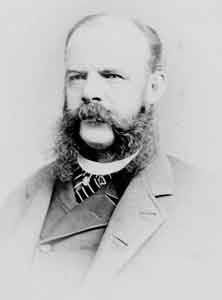
FORBES, EDWIN (1839-1895). Civil War illustrator, painter, etcher, and writer. Born in New York City, he studied painting under Alfred F. Tait. When the Civil War began, he was assigned to follow in the Army of the Potomac as a staff artist for Frank Leslie’s Illustrated Newspaper. His sketches of camp life and battlefields appeared in that weekly throughout the War. They were later made into copperplate etchings, published as Life Studies of the Great Army, and were awarded a medal at the Centennial Exposition of 1876. The original prints were purchased by General William Tecumseh Sherman and decorated his office in the War Department in Washington, D.C. After 1878, he devoted himself to landscape and cattle pictures, working from his studio in Brooklyn. A bill was introduced in Congress in 1884 to authorize the purchase by the government of his original Civil War drawings. However, the appropriation of $7,500 was never approved.
Forbes spent his last years tapping his War experiences for illustrations for several children’s books, including General William T. Sherman, His Life and Battles, Mostly in One Syllable Words (1886), written by his wife Ida B. Forbes, Our Naval Heroes in Words of Easy Syllables (1886), by Josephine Pollard, and H.W. Pierson’s Life and Battles of Napoleon Bonaparte (1887). In 1891, he published Thirty Years After, a volume focused on the Civil War. A few years before his death he was paralyzed on his right side; he then taught himself to paint and write with his left hand. He died in Flatbush of nephritis. In 1919, the collection of his sketches, plates, and prints was given to the Library of Congress by John Pierpont Morgan. Section 106, lot 6001.
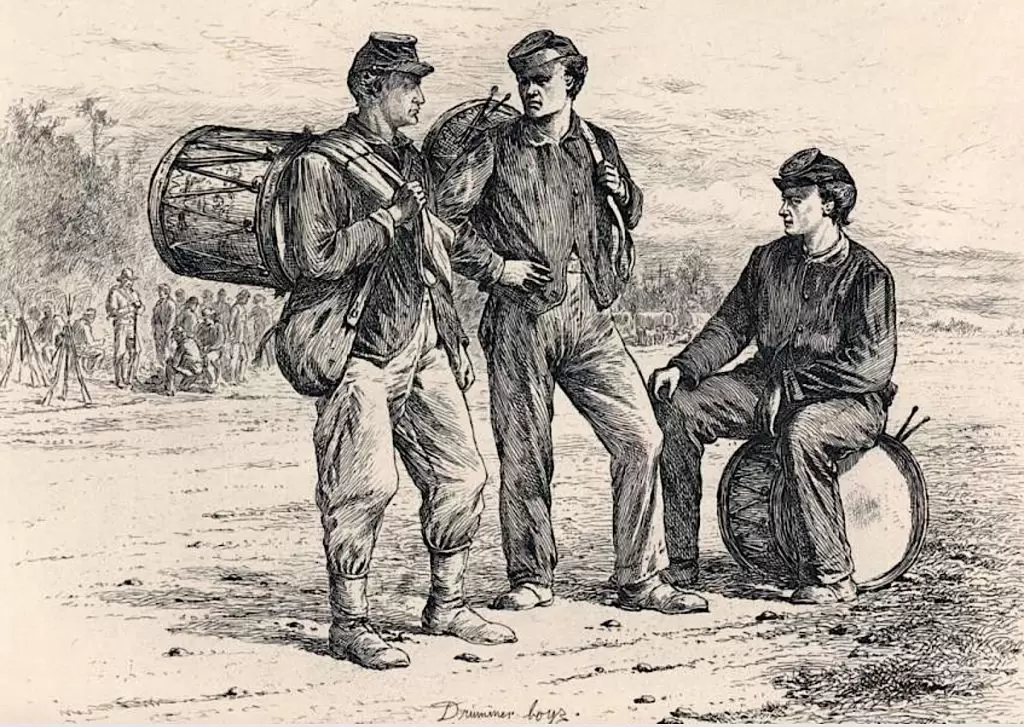
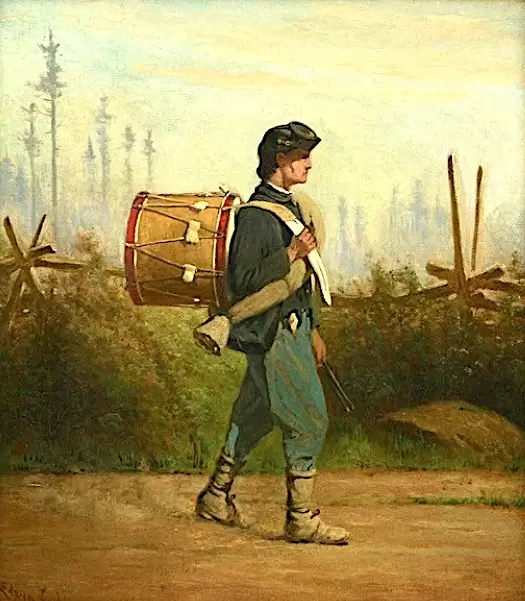


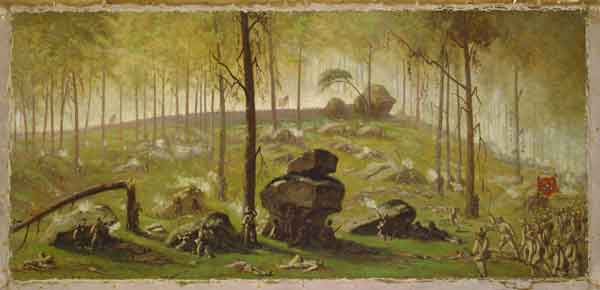
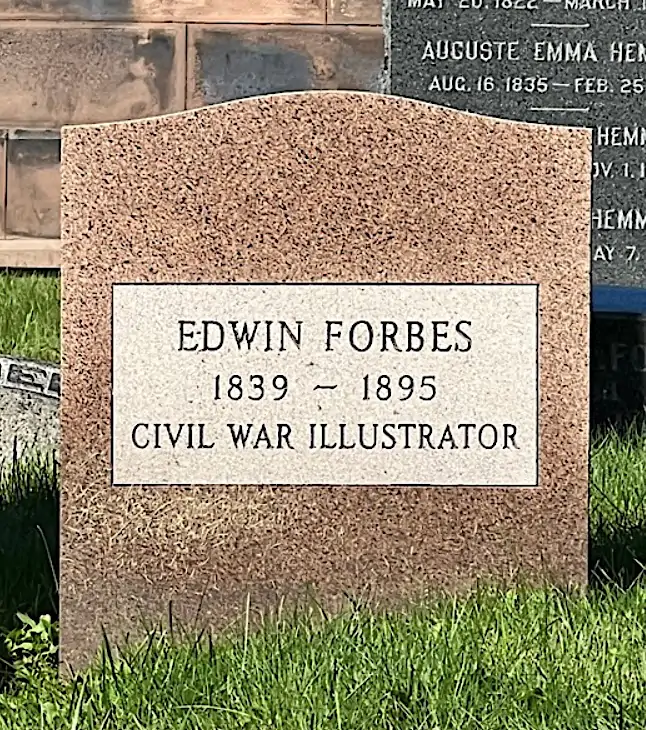
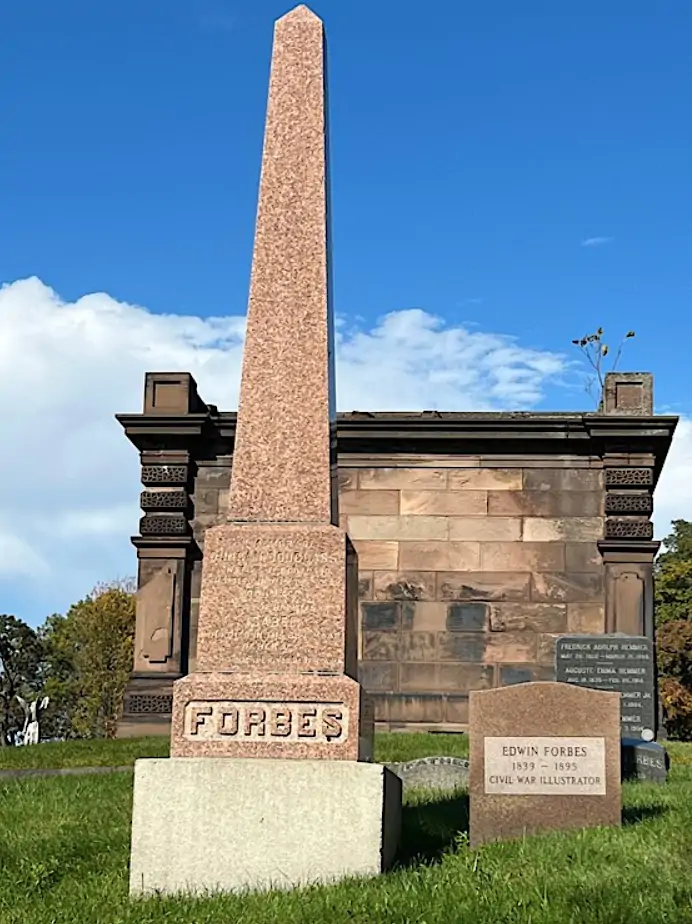
FORBES, GEORGE E. (1832-1879). Corporal, 83rd New York Infantry, Company I. Forbes, a native of New York, was a carpenter by trade as per the census of 1850. By 1860, he was living in Cincinnati, Ohio, where he was a collector. During the Civil War, he enlisted at New York City as a private on July 17, 1861, and mustered that date into Company I of the 83rd New York. On May 15, 1862, he was promoted to corporal of his company but was dropped from the rolls for unknown reasons on October 31, 1862. His pension record indicated service in Company I of the 9th New York but no information about that enrollment is known.
He was still living in Cincinnati in 1870 where he was a book agent. By 1876, he moved to Brooklyn where he was listed as a book dealer in the Brooklyn Directory. He last resided at 201 Java Street in Brooklyn. Forbes succumbed to phthisis. Josephine Forbes applied for a widow’s pension in 1894, application 595,558, but there is no certificate number listed. Section 166, lot 29907, grave 1.
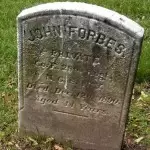
FORBES, JOHN (1846-1890). Private, 28th Regiment, New York National Guard, Company E. Born in Manhattan, his family moved to Staten Island then settled in Brooklyn before the Civil War. Forbes served for 100 days with his brother Philip (see) in the 28th New York National Guard in 1864. The regiment went to Baltimore by ship and then to Elmira, New York, where it guarded the prison there. He later joined Company D of the 14th Brooklyn where he became a skilled marksman.
After the War, he was a librarian and writer. His last address was 312 4th Street in Brooklyn. The cause of death is listed as “otitis.” His widow, Blanche Forbes, who is interred with him, received a pension in 1891, certificate 330,024. The Veterans Association of the 28th New York erected a headstone at his grave. Section 84, lot 6425.
FORBES, JOSEPH (1820-1898). Captain, 71st Regiment, New York State Militia, Company B. A native of Ireland, Forbes served in the 71st New York State Militia, Engineers, for three months in 1861. He re-enlisted at New York City on May 28, 1862, and was commissioned as a captain into the same unit and company, then part of the National Guard. He mustered out on September 2, 1862. As per the Brooklyn Directory of 1869, and the censuses of 1870 and 1880, he was a laborer. The Veterans Schedule of 1890 confirms his military service. Forbes’ last residence was 461 Hudson Avenue in Brooklyn. His death was caused by general debility. Section 115, lot 11193.
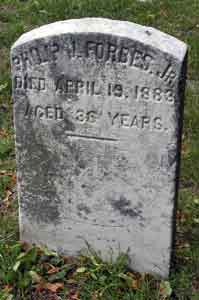
FORBES, PHILIP JONES (1847-1883). Sergeant, 28th Regiment, New York National Guard, Company E; private, 22nd Regiment, New York National Guard, Company D. Born in Manhattan and the son of a bookseller, his family lived in Staten Island when Forbes was a youngster and then moved to 135 Macon Street in Brooklyn in 1859. He served as a private for 30 days in the 22nd National Guard in 1863. The following year, he served as a sergeant in the 28th New York National Guard for 100 days. According to a descendant, his brother John (see), who served with him, said, “…one day after a long march, Phil was posted as a sentry and being very young was quite exhausted. I had to stand guard with him for he would surely have gone to sleep, which was one of the worst offenses and for which he could have been shot.” After the War, he was employed as a merchant dealing in oils, chemicals and glycerin at 76 Williams Street in Manhattan. Forbes died of pleurisy at his parents’ home on Macon Street in Brooklyn. Section 84, lot 6425.
FORBES, THOMAS (1827-1872). Private, 93rd New York Infantry, Companies I and A. Born in Scotland and employed as a clerk, Forbes enlisted as a private at Whitehall, New York, on November 16, 1861. Ten days later, he mustered into Company I of the 93rd New York and on March 1, 1862, was transferred to Company A of the same regiment from which he was discharged on an unknown date. As per the census of 1870, he was a clerk. He last lived with his brother at 135 Summit Street in Brooklyn. His death was attributed to phthisis. Section 17, lot 17245, grave 260.
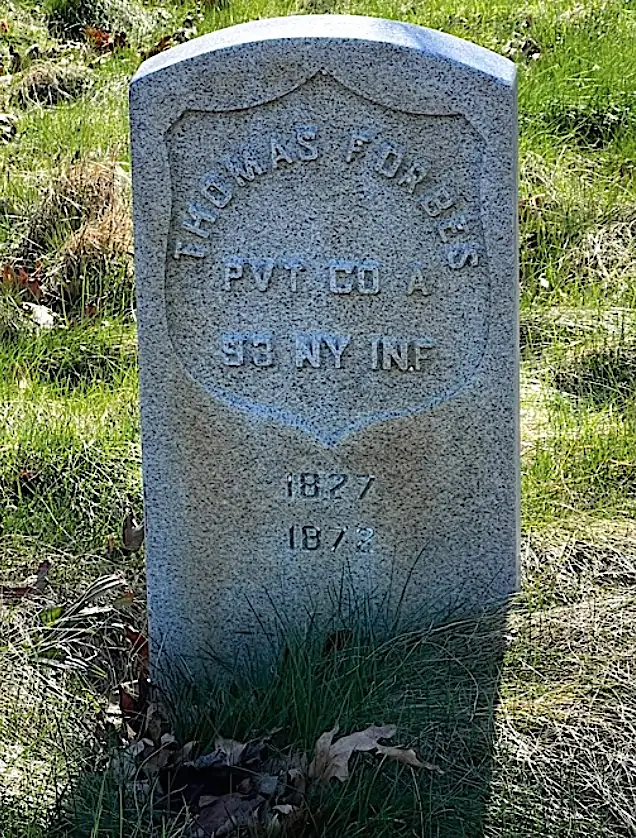
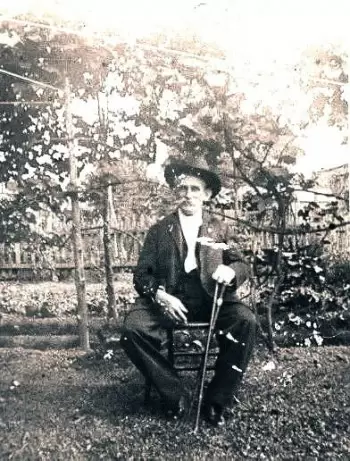
FORBES, WILLIAM ALEXANDER (1839-1905). Private, 30th New Jersey Infantry, Company C. Born in New York City and a brother of Colin (see), his father was a prominent silversmith in the city. He enlisted on September 3, 1862, and mustered into the 30th New Jersey on September 17. He mustered out on June 27, 1863, at Flemington, New Jersey. He later reported that he was perfectly healthy when he entered the 30th but that he had suffered from, and been treated for, rheumatism that began and developed during his service. In 1864 and 1865, he served as a civilian in the Construction Corps, working at Nashville and Chattanooga, Tennessee, in support of the western armies, building railroads and bridges.
After the Civil War, Forbes lived in New York City and worked as a carpenter. But his physical condition deteriorated (his head enlarged and his legs bowed) and he was unable to work after 1889. He wrote in January 1898, “…Two years wiped out what little money I had saved and since then have had to depend on my Sister for subsistence…” In 1905, it was determined that he was totally incapacitated, unable to walk without the support of two canes as a result of a disease of his bones and an inflammation of his joints, and pursuant to an act of Congress, there was an increase in his invalid pension, certificate 742,345. Forbes was a member of the Alexander Hamilton Post #182 of the G.A.R. He last lived at 243 East 126th Street in Manhattan. His death was caused by nephritis. Section 97, lot 5290.
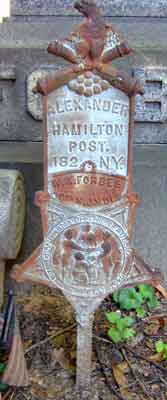
FORBUSH, HENRY HARRISON (1841-1886). Corporal, 19th Regiment, New York State National Guard, Company A. Born in New York State, Forbush served for three months as a corporal when the 19th Regiment was activated for three months in 1862. According to his 1863 Draft Registration and the 1873 Brooklyn Directory, he was employed as a clerk; the 1876 Brooklyn Directory lists him as a bookkeeper. As per the census of 1880, he was not working and suffering from kidney disease. His last residence was at 346 Schermerhorn Street in Brooklyn. His death was caused by consumption. Section 102, lot 2798.
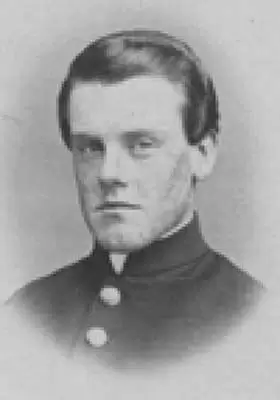
FORD, EDWARD LLOYD (1844-1880). Captain and aide-de-camp, United States Volunteers; captain, 99th Pennsylvania Infantry, Companies B and H. Of English origin, he was involved in the publishing business beginning at age thirteen when he worked for the American News Company, formerly known as Ross & Tousey. During the Civil War, Ford enlisted as a first lieutenant on February 1, 1862, and was immediately commissioned into Company B of the 99th Regiment of the Pennsylvania Infantry. He was promoted to captain and simultaneously transferred to Company H on November 13, 1863. On September 10, 1864, he was promoted to captain and aide-de-camp in the United States Volunteers. As per his obituary in the New York Herald, he was on the staff of General David Bell Birney where he was the youngest staff officer in the service. He continued to be on detached duty until his muster out on July 1, 1865.
Ford returned to work at Appleton’s publishing house after his military service. In 1867, he joined the publishing firm of J. B. Ford & Company, headed by his father. Later, the firm took the name Fords, Howard & Hubert. Edward Ford was known for establishing the Christian Union, the weekly religious publication of Reverend Henry Ward Beecher (see) that had a wide circulation of 136,000. The firm also published works by Horace Greeley, William Cullen Bryant, and Harriet Beecher Stowe.
In addition, Ford introduced improvements in printing facilities that folded and pasted; these changes were later adopted in the building of large presses. His expertise was in the manufacturing and business aspects of publishing. His funeral was held at the home of his father, John Ford, at 8 Garden Place in Brooklyn. Henry Ward Beecher officiated at his funeral calling him a friend as well as business associate. Edward Ford’s last address was in Morristown, New Jersey. His death was caused by phthisis pulmonalis. In 1891, Lucenia (Lucie) Tucker Young-Ford, who is interred with him, applied for and was granted a widow’s pension, certificate J-371,375. Section 163, lot 14895.
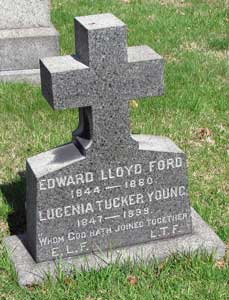
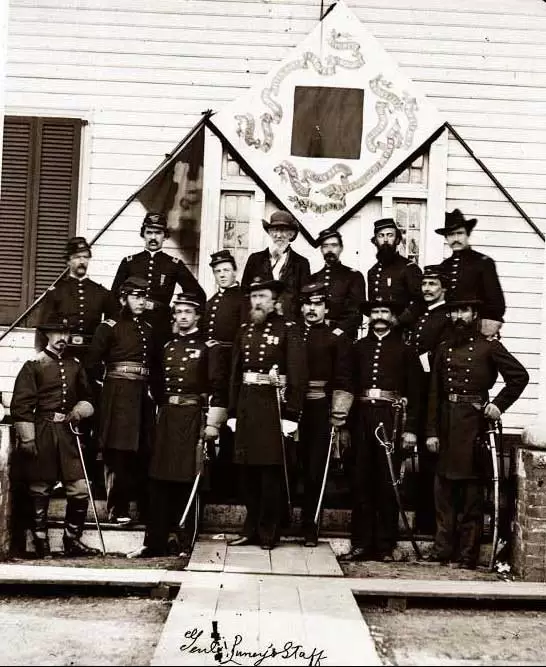
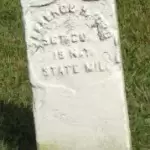
FORD, TERRENCE (or TERRANCE) P. (1840-1904). Sergeant, 19th Regiment, New York State National Guard, Company E. Originally from Ireland, he enlisted as a sergeant and mustered into the 19th New York on May 26, 1862, at Newburgh, New York, and mustered out there after three months on September 6. As per the 1863 Draft Registration and the census of 1880, he was a printer. The Veterans Schedule of 1890 confirms his military service.
Ford mustered into B. F. Middleton Post #500 of the G.A.R. on September 5, 1891, and held the position of commander at one point. The census of 1900 indicates that he was a printer and publisher. In 1904, he applied for a pension, application 1,309,684, but died before it was certified. He last lived at 273 East 13th Street in Brooklyn. Ford died of myocarditis. On March 28, 1941, the application for a marble veteran’s headstone at Green-Wood was approved. Section 193, lot 30883, grave 2.
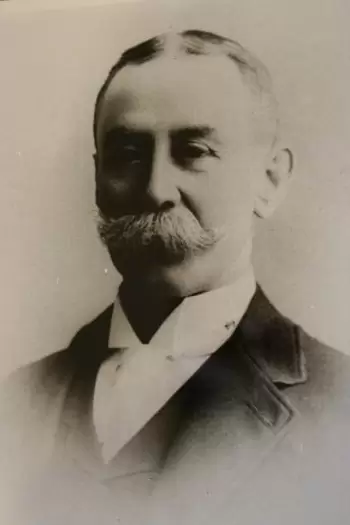
FORDHAM, ELBERT H. (1838-1903). Lieutenant colonel by brevet; major, 31st Massachusetts Infantry, Company A; private, 13th Regiment, New York State Militia, Company G. Born in Sag Harbor, New York, Fordham enlisted as a private and served for three months in 1861 in the 13th Regiment, New York State Militia. A year later, he was a resident of Pittsfield, Massachusetts, and employed as a clerk. On February 20, 1862, he re-enlisted as a first lieutenant and was immediately commissioned into the 31st Massachusetts. He was promoted to captain on September 9, 1862. On November 28, 1863, Brigadier General Phillip St. George Cooke recommended him for the position of assistant adjutant general. Cooke said of Fordham, “…He has performed the duties of said office for nearly a year and whilst under my command has shown capacity, fitness and acquaintance with its duties. Captain Fordham stands high as a gentleman & officer.” Fordham rose to major on April 15, 1864, and was brevetted to lieutenant colonel on March 13, 1865.
The 1876 Brooklyn Directory lists Fordham as a cashier; he is listed as a clerk in the 1891 New York City Directory. His last residence was at 579 Carlton Avenue in Brooklyn. Shortly after his death in 1903, Mary Fordham applied for and received a widow’s pension under certificate 568,188. In September 2010, an oilcloth talma, a sleeveless cape worn as raingear, with an inked stencil bearing his name and regiment (E.H. Fordham/6th Mass Cav’y-the name given to the 31st Massachusetts in December 1863), was offered for sale on an online website. The item was identified as a rare article of military clothing. Section 206, lot 31329.
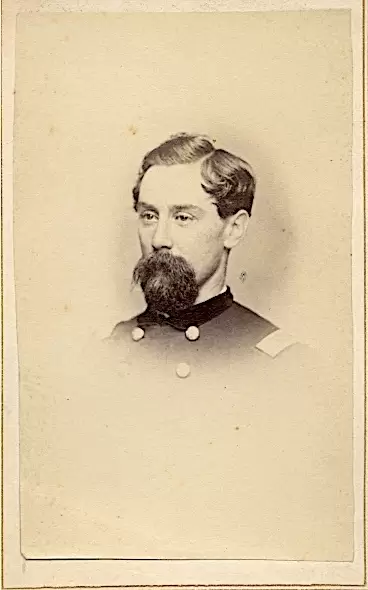
FORKER, JAMES H. (1840-1911). Private, 13th Regiment, New York State Militia, Company D; 5th New York Heavy Artillery, Company A. A Brooklynite by birth, Forker first served for three months as a private in Company D of the 13th New York State Militia from April 21, 1861, through August 6, 1861. The 13th, also known as the National Grays, was an artillery unit stationed at Annapolis, Maryland. He re-enlisted on August 30, 1862, mustered immediately into the 5th New York Heavy Artillery, and was discharged for disability on November 15, 1862, at Fort Marshall in Baltimore. As per his muster roll, he was 5′ 7″ tall with blue eyes, light hair, fair complexion and employed as a clerk.
According to the census of 1870, Forker was a clerk for the Brooklyn Bridge Company; he was a bookkeeper according to the census of 1880. In 1892, he sought an invalid pension, application 1,126,500, but there is no certificate number. When his wife Sarah, who is interred with him, died in 1905, her obituary in the Brooklyn Standard Union reported that he was a retired contractor. Forker’s last residence was 693 Degraw Street in Brooklyn. He died of a cerebral hemorrhage. Section 53, lot 6332.
FORKER, HOWARD JAMES (or JAMES H.) (1844-1915). Private, 13th New York State National Guard, Company G. Born in Utica, New York, Forker came to New York City as a young man. As per his pension record, he was borne on the rolls as James H. Forker. He served as a private in the 13th Regiment (Artillery) from May 28 through September 12, 1862. The 13th first went to Washington, D.C., then served in Suffolk, Virginia.
The census of 1870 lists him as a lawyer whose real estate was valued at $30,000 and whose personal estate was worth $7,500. According to the census of 1900, he was a judge. A noted jurist, he was a judge of the Court of Special Sessions at the time of his death. His cause of death was myocarditis. In 1916, Fanny Forker, who is interred with him, applied for and received a widow’s pension, certificate 811,496. Section 152, lot 23509.
FORMAN, JOHN L. (1839-1866). Private, 84th New York (14th Brooklyn) Infantry, Company H. A Brooklyn native, his muster roll and the census of 1860 noted that he was a clerk. After enlisting as a private at Brooklyn on April 18, 1861, Forman mustered into the 14th on May 23. According to his military records, he deserted on September 25, 1861, at Arlington, Virginia. However, it is possible that he did not desert but was ill and was sent home, as many men of the 14th were, for treatment. His last residence was on Bedford Avenue in Brooklyn. His death was caused by consumption. Section 62, lot 7200.
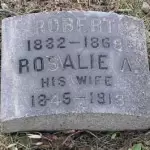
FORREST, ROBERT (1832-1868). Corporal, 22nd Regiment, New York State National Guard, Company C. A New York City native, Forrest was a banker as per the census of 1860. During the Civil War, he enlisted on May 28, 1862, at New York City, mustered into the 22nd that day, and mustered out at New York City on September 5 after three months. He returned to the same company for 30 days when the 22nd Regiment was reactivated in 1863. The Brooklyn Directory of 1867 lists him as a clerk. He and Thomas Forrest (see) were brothers. He last lived at 66 State Street in Brooklyn. Rheumatism was the cause of his death. Section 54, lot 7130.
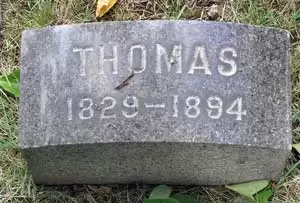
FORREST, THOMAS J. (1829-1894). Second lieutenant, 6th Regiment, New York State Militia, Company G. A New York native, he was a clerk according to the censuses of 1850 and 1860. On April 19, 1861, he enlisted at New York City as a private and mustered into the 6th Regiment on May 14. After being promoted to second lieutenant on June 1, 1861, he mustered out at New York City on July 31 of that year. He was the brother of Robert Forrest (see). His last residence was at 89 Henry Street in Brooklyn. He died of intussusception, an intestinal obstruction. Section 54, lot 7130, grave 4.
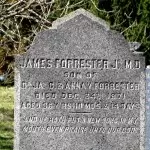
FORRESTER, JR., JAMES (1815-1871). Assistant surgeon, 15th Regiment, New York Engineers, Company S. A New Yorker by birth, Forrester enlisted and was commissioned as an assistant surgeon in the 15th on May 14, 1861, did not muster in, and was discharged on the same day. As per his obituary in the New York Herald, he was a member of several fraternal groups among them the Freemasons and the Knights of Templar. A physician, he last lived at 202 Bleecker Street in Manhattan. Forrester died from pneumonia. The inscription on his gravestone reads: “AND HE HATH PUT A NEW SONG IN MY MOUTH EVEN PRAISE UNTO OUR GOD.” Section 95, lot 2635.
FOSDICK, GREENFIELD (1838-1896). Private, 11th New York Infantry, Company D. Fosdick, who was born in New York, enlisted as a private on April 20, 1861, at New York City, and mustered into the 11th New York on May 7. After he was wounded in the right ankle on July 21, 1861, at Bull Run, Virginia, he became a prisoner of war for nearly five months. He mustered out on June 2, 1862, at New York City. In 1872, his application for an invalid pension was granted, certificate 512,283.
The censuses of 1870 and 1880 indicate that he was a painter. As per his obituary in the New York Herald, Fosdick was a member of Noah L. Farnham Post #458 of the G.A.R.; comrades were invited to attend his funeral. The brother of Richard Fosdick (see), he last resided on Perry Street in Manhattan. His death was caused by cirrhosis of the liver. Emma Fosdick applied for and received a widow’s pension in 1896, certificate 428,248. Section 14, lot 12666.

FOSDICK, RICHARD INMAN (1835-1867). Sergeant, 83rd New York Infantry, Company H. Born in New York City and a painter according to the census of 1860, Fosdick enlisted there as a corporal on May 27, 1861, and immediately mustered into the 83rd New York. He was promoted to sergeant on October 3 of that year, and was discharged for disability on February 11, 1863, at Convalescent Camp. He was the brother of Greenfield Fosdick (see). As per his obituary in the New York Herald, he was a Freemason; his fellow Masons were invited to attend his funeral. He last lived at 328 West 15th Street in Manhattan. He succumbed to heart disease. In 1872, Cornelia Fosdick applied for and received a widow’s pension, certificate 171,042. Section 14, lot 12666.
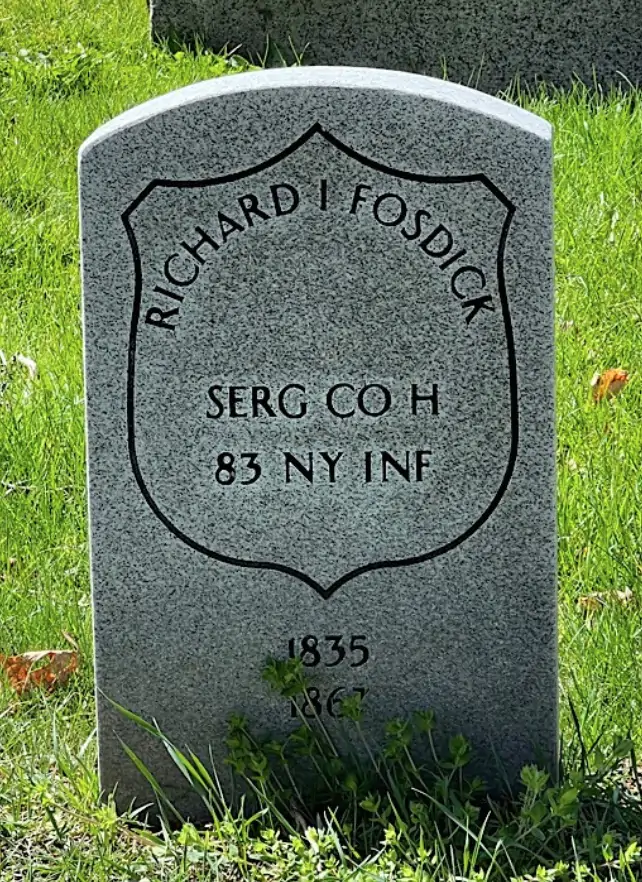
FOSKETT (or FASKETT), WILLIAM (1834-1911). Private, 84th New York (14th Brooklyn) Infantry, Company D. Of English birth and a caulker by trade, Foskett enlisted at Brooklyn on April 18, 1861, and mustered into the 14th on May 23. From October 22, 1863 through April 4, 1864, he was detached as a guard to regimental headquarters. He mustered out at New York City on June 6, 1864. The censuses of 1870 and 1880 indicate that he was a ship caulker. The Veterans Schedule of 1890 confirms his Civil War service. He applied for an invalid pension in 1900 that was granted under certificate 1,009,060. According to the censuses of 1900 and 1910, he was a watchman.
As per an article in the Standard Union on May 18, 1911, Foskett dropped dead of a heart attack while sitting on the porch of the Mansion House Hotel on Hicks Street in Brooklyn while waiting to watch the parade marking the 50th anniversary of the 14th Regiment. The newspaper account reported, “…Excitement over the event is supposed to have caused heart failure. The news of his sudden death cast gloom over the few of his old war comrades who paraded this afternoon.” His obituary in the Brooklyn Daily Eagle noted that members of the 14th Veterans and members of Wives and Daughters of the 14th Regiment were invited to attend his funeral. Elsie (Elise) Foskett, who is interred with him and who died in 1901, had been a member of the Wives and Daughters of the 14th Regiment. An article about the aforementioned parade in the Brooklyn Daily Eagle on May 19, 1911, noted that those assembled rose and honored Foskett with a moment of silence when his name was read. A subsequent article about his funeral which appeared in the Brooklyn Daily Eagle on May 22, 1911, confirmed his Civil War service. That article reported that large delegations from Rankin Post #10 of the G.A.R. and from the 14th Regiment War Veterans were in attendance and that they conducted military rites. The Reverend J. Henri Sattig, chaplain of the 14th, closed the service with words of tribute about the deceased. Foskett last lived at 166 East 3rd Street in Brooklyn. Section 153, lot 18905.
FOSTER, CHARLES GRANT (1842–1927). First lieutenant, 22nd Connecticut Infantry, Company E. Born in Hartford, Connecticut, Foster was the son of James Phelps Foster and Eunice Rose. According to the 1850 census, he grew up in a household of 12 (including one presumed servant), attended school, and was the third youngest child.
On August 28, 1862, a few months shy of his twentieth birthday, he enlisted as a sergeant major and was mustered into Field & Staff of the 22nd Connecticut Infantry on September 20, 1862. He was promoted to first lieutenant on November 6, 1862, the same day he was transferred to Company E. He mustered out of service on July 7, 1863, in Hartford, Connecticut.
By about the time the war ended, he had moved to Brooklyn, according to the 1865 New York State census, and was one of many lodgers on the property of the Burns family. He applied for a passport in 1867, giving us a visual description, including his height (5 feet, 6.5 inches) and hair and eye color (both dark brown). The passport was a likely requirement for his profession: commission merchant, as the 1870 census details. Foster likely remained in Brooklyn until his marriage to Emma Louise Thompson on November 11, 1869. He was living in Brooklyn’s Third Ward, according to the 1870 census, on property owned by John Ward and his wife, Harriet. He’d known them for years, boarding alongside them in 1865. Their bond was presumably close: the Fosters’ first child, Ward, may have been named after them. Born in 1870, that child lived until 1873. The Fosters’ next child, Charles Grant Foster Jr., was born the following year but also died about three years later. Their third and last child, Caroline Rose, was born in 1877 and would be a mainstay for the remainder of her father’s life.
The year 1880 brought a marked shift in Foster’s life and family. His wife, Emma, died, leaving him as a widower in his late thirties with a young child to raise. He would never remarry. Instead, he and daughter Caroline Rose left Brooklyn for Morristown, New Jersey, where he remained living on Mendham Avenue for the rest of his long life. The New Jersey State census of 1915 and the United States census of 1900 and 1920 show Foster and his daughter, who never married or had children, living with a number of staff, including those likely working the farm, as well as possible relatives.
Foster knew great commercial success, having been a partner of Manhattan’s Ward and Foster grain and warehouse firm, according to his obituary in the Hartford Courant. The article also stressed his experience as a pioneer cattle breeder on a large stock farm in New Jersey. Foster died of nephritis on August 11, 1927, at the age of 84. Section 33, lot 21867.
FOSTER, MERRILL T. (1848-1932). Corporal, 1st Vermont Light Artillery. A native of Montpelier, Vermont, and a resident of Moretown, Vermont, Foster, at the tender age of 14 (according to both his family and Green-Wood records), enlisted as a private on January 2, 1862, and mustered into the 1st Vermont Light Artillery on February 18 (though the minimum age of enlistment during the Civil War was 18). He was promoted to corporal on February 1, 1864, and mustered out on August 10, 1864, at Brattleboro, Vermont. He applied for and received an invalid pension in 1896, certificate 824325; the pension was updated in 1911.
In 1896, he was a master of the Acanthus Masonic Lodge at Bedford Avenue and Madison Street in Brooklyn. As per his obituary in the Brooklyn Daily Eagle, he was a knight in the Clinton Commandery of the Knights Templar; members were requested to attend his funeral. Foster last lived at 2502 Cortelyou Road in Brooklyn. Shortly after his death caused by a cardiac condition, his wife’s application for a widow’s pension was approved, certificate a-4-10-33. Section 134, lot 29725, grave 478.
FOULDS, JAMES (1842-1863). Private, 13th Regiment, New York State National Guard, Company B. A New Yorker by birth, the census of 1860 indicates that Foulds was living with his parents and working as a clerk. During the Civil War, he enlisted and mustered into the 13th Regiment’s National Guard at Brooklyn on May 28, 1862, and mustered out at Brooklyn after serving three months on September 12. Foulds’s last residence was at 73 Adelphi Street in Brooklyn where he died from marasmus (malnourishment). Section 12, lot 8842.
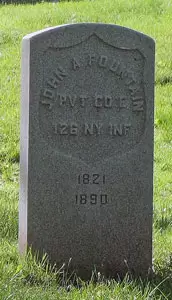
FOUNTAIN, JOHN A. (1821-1890). Private, 126th New York Infantry, Company E; Veteran Reserve Corps, 2nd Battalion. A New York State native, Fountain enlisted on April 11, 1864, at Gorham, New York, as a private. On that date he mustered into the 126th New York. He transferred into the 2nd Battalion of the Veteran Reserve Corps as a private on January 1, 1865, and mustered out on August 4, 1865, at Washington, D.C. His last residence was 50 3rd Avenue in Brooklyn but died in Kings County Insane Asylum where he was suffering from dementia. Section 44, lot 4684.
FOWLER, JR., BERNARD (1840-1916). First lieutenant, New York Marine Light Artillery, Company E; corporal, 3rd Colorado Cavalry, Company I; private, 66th New York Infantry, Company I. A native of New York City and a clerk, Fowler was 5′ 9″ tall with blue eyes, brown hair and a fair complexion. He enlisted at New York City as a private on September 30, 1861, and mustered into the 66th New York that same day. Although he is listed as having deserted at New York City on October 3, 1861, he re-enlisted at New York City on January 21, 1862, was commissioned into the New York Marine Light Artillery as a first lieutenant on February 20, and resigned on November 24 of that year. On June 20, 1863, he re-enlisted as a second lieutenant at Albany, New York, mustered into the 11th Artillery but was not assigned or commissioned, and mustered out at New York City on October 30, 1863, as a supernumerary. He re-enlisted as a corporal on September 1, 1864, at Denver, Colorado, mustered into the 3rd Colorado Cavalry that day, and mustered out at Denver on December 31, 1864.
According to the census of 1880, the Brooklyn Directory for 1900 and the censuses of 1900 and 1910, he was a real estate broker. In 1904, his application for an invalid pension was granted, certificate 1,085,017. He last resided at 1887 Stillwell Avenue in Brooklyn. His death was attributed to cholecystitis (inflammation of the gallbladder). His widow, Ella Fowler, applied for and was granted a pension in 1916, certificate 809,817. Section 183, lot 19481.
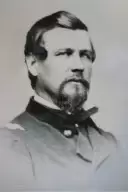
FOWLER, EDWARD BRUSH (1828-1896). Brigadier general and major general by brevet; colonel, 84th New York (14th Brooklyn) Infantry. Born in New York City and married in 1852, he enlisted at Brooklyn on April 18, 1861, and was commissioned into the 14th Brooklyn as its lieutenant colonel next day. As per his monthly regimental records, he assumed command of the regiment on July 21, 1861. Fowler wrote about the rout at Bull Run, Virginia, on July 21, 1861, in his history of the 14th (written in 1883). One part read:
“…The regiment reformed at the foot of the hill, at the Sudley Ford road, and advanced again to the summit. This time it was supported by the battalion of Marines in its rear. On reaching the top of the hill, as the enemy’s volley came belching forth, the men, without command, dropped to the ground, and the shots passed over them and took effect upon the Marines in their rear, who, notwithstanding the earnest efforts, in language more forcible than pious, of their commander, Major [John] Reynolds (see), broke and ran to the rear, soon followed by the unsupported Fourteenth…”
In his field report from Upton’s Hill, Virginia, on November 19, 1861, he described the previous day’s skirmish at Fall’s Church where James Seymour (see) and Walter Taylor (see) were killed while suddenly attacked while on picket duty. He wrote:
“My impression is that the enemy had an object in view besides the cutting off of a small outpost and losing more than they gained, and that they found us in stronger force than they expected. They were seen to carry away 3 dead men (1 an officer) in a cart, and several wounded men were conveyed to their rear on horseback by their comrades. One valuable horse is lying dead near the scene of action and several horses were seen galloping through the fields without riders. Our list of casualties is as follows: 2 killed, 1 wounded, and 10 missing—all of Company H, which was the only company engaged. During the skirmish none of the pickets fell back except on the point attacked.”
Fowler was severely wounded in the leg at Groveton during the Battle of Second Bull Run, Virginia, on August 29, 1862, and was on leave of absence as of August 31; that wound caused him to miss the Battles of South Mountain and Antietam in Maryland. He did, however, arrange for his horse to be at both battles as a symbol of his feeling for the regiment. As per Fowler’s medical certificate, filed on August 31, 1862, and originally designated for twenty days, “This officer cannot rejoin his regiment without risk of life.” He was promoted to colonel on October 24, 1862; at that time, his muster roll notes that he was absent and sick in Baltimore, Maryland. Still absent in Baltimore until December 10, 1862, Fowler returned to active duty with rank from October 1. On January 12, 1863, Fowler was assigned to Convalescent Camp at Long Bridge, Virginia.
On March 26, 1863, he wrote to the 14th Regiment’s Headquarters near Belle Plains, Virginia, requesting a forty-eight hour leave of absence for H. T Head (see), the regiment’s adjutant, to secure misplaced records for the months of August and December 1861. His commanding officer, Charles Kingsbury (see), praised Fowler (and another colonel) in his field report of April 24, 1863, describing the advance to Port Royal, South Carolina, “…The endurance shown by their march of nearly thirty-six miles in twenty-four hours, during the very inclement weather of yesterday, proves their value as tried and experienced soldiers, and entitles them to the highest admiration and praise.” He led his men at Gettysburg, Pennsylvania, when they captured Mississippi’s Second Brigade, and continued at their head into 1864. In his battle report about Gettysburg, written on July 28, 1863, from Warrenton Junction, Virginia, he wrote in detail about the skirmishes and heavy fire that his troops endured. Some segments follow:
July 1 “…The column of infantry was closely packed and moved without panic. The enemy was at fault here not to have subjected us to a sharp artillery fire. It was not until the rear of our column had entered the town that the enemies’ batteries opened, and then only for a few shots, as their troops entered the town almost at the same time as ours. One shell, I think a percussion, struck the side wall of a brick house and threw out the wall, directly where the Adjutant and I were riding. Our horses shied across the street, which saved us, although we were covered with mortar and hit with fragments of brick. We had some men wounded in passing through the town, as the enemies’ skirmishers occupied the north end of it, and were firing from behind stoops, from windows, etc., and we also lost many prisoners, the more as the 14th was near the rear of the column.
At one time I thought we would have to disperse, and was on the point of ordering the colors taken from the staffs, but a moment’s reflection determined me to carry them through. I had a desire to stop and fight them, but their long lines of battle then near the town and advancing rapidly, convinced me that to stop would be to lose the Regiment. We continued through the town to Cemetery Hill, about a quarter of a mile south of the town, where a stand was made and the artillery placed in position at 4 P. M…
July 2, 1863 “…Our line as now formed was an exceedingly strong one, shaped like a horse shoe, with the right resting on a stream and mill pond, and the left resting on the base of Sugar Loaf Hill, no part of it being more than a mile and a half from any other part. This gave us the advantage of reinforcing any point rapidly. Its disadvantages were from artillery fires, as all parts were exposed and it had no sheltered interior places.
In extent from right to left, our line was from three to four miles in length. Stationed on the right of the Cemetery were the 12th and 1st Corps. At the Cemetery the 11th Corps, and on the left of the Cemetery the 2nd, 3rd, 5th and 6th Corps, in all about fifty thousand men. The enemies’ force was estimated at ninety thousand.
At 4 P. M. the enemy opened with artillery from all parts of his line, which was at once answered by our batteries. A terrific cannonading was kept up by both sides for about an hour, when the enemy attacked on our left with infantry, and was repulsed by the 3rd and 5th Corps after much hard fighting and great loss on both sides.
At about sundown the enemy attacked our right, the position occupied by the 12th Corps when it was nearly dark I was sent to the 14th to reinforce the right of the line. On arriving on the right, we received a fire from the inside of our lines, and, it then being quite dark I was placed in a trying position to determine if we were being fired on by our friends, or if the enemy had penetrated inside of our line.
I formed the Regiment facing the fire, and sent out a scout, (Cox of I Co.), to reconnoiter, who returned and reported it to be the 10th Virginia and as their fire was continued, I directed a volley to he fired into them, which at once silenced them.
The 1st California Regiment then advanced on our right and front, and I advanced the 14th up to the rifle pits to relieve a Regiment said to be out of ammunition, and on reaching the pits, I found that there were already two lines of battle there, and that we were not required there. Receiving no orders, I then returned with the Regiment to join the Brigade, which I had no sooner reached than a staff officer from General Greene ordered us back to relieve a Regiment in the trenches on the right, where we remained all night.
We were relieved about daylight, and took position in the second line. There was no fighting while we were in the trenches at night. At early dawn on the morning of the third, the enemy renewed his attack on the right. About sunrise we were relieved and ordered to join our Brigade. We remained with the Brigade but a short time, barely sufficient to get breakfast, when we were again ordered to the right to reinforce General Geary.
The Regiment advanced to the trenches at double-quick, cheering and shouting, and remained there fighting until our ammunition was exhausted. I ordered each man to retain a load in his rifle to be used while being relieved. The men fought in the trenches with great coolness, many of them standing up and looking around for a good range before firing…”
July 4, “…I consider every officer and man who passed through that trying ordeal of three days’ duration is justly entitled to the name of hero.
Our losses in killed, wounded and missing (the sad part of the statement) amounts to two-thirds of the force engaged. May God spare to us those who still are living, and give consolation to the mourners of those dead!
He will provide for heroes who fall in a sacred cause, and the proudest epitaph that can be inscribed on the monumental tablet is, “Killed at Gettysburg.”
On December 28, 1863, Fowler was ordered to report to First Army Corps Headquarters to assume the role of provost marshal; his men would guard the town of Culpepper, Virginia. He mustered out on June 6, 1864, at New York City. His pension records indicate subsequent service as provost marshal of the 3rd District of New York from June 6, 1864, through November 30, 1865. Fowler was brevetted brigadier general and major general on June 22, 1867, to date from March 13, 1865, “for gallant and meritorious services.” A certificate given to Fowler on September 20, 1869, notes that the gunshot wound to his right thigh, incurred in battle, disabled him from walking. Fowler applied for and received an invalid pension on May 18, 1874, certificate 131,851; he was paid $15 per month in arrears for June 1864 and from December 1865 through May 17, 1874 (his service as provost marshal after muster out was deducted)—the total payment was $1,538. (In 1886, Fowler wrote to the Commissioner of Pensions asking for an additional three months pay given to officers at the end of the War; the Commissioner’s decision is unknown.) As per his surgeon’s certificate, Fowler was 5′ 11½” tall, weighed 225 pounds and had a light complexion and pulse of 72. His surgeon noted that the anterior muscles of middle third of his right thigh were weakened.
He was an accountant, United States Customs official, and bank officer after the Civil War. In 1871, he was elected president of the 14th Veterans’ Association. The association wrote a letter of support that was signed by Albert G. A. Harnickell (see) when he was a candidate for sheriff of Kings County in 1878, “…We, his comrades in the trial by fire, his associates in private life, and his co-laborers in political action, make this claim in his behalf, asserting that General Fowler’s standing as a Republican, and his services to the party, make him the peer of any other Republican who may be named for the office of Sheriff, while his services in the Army of the Union entitle him to a preference…” He lived at 47 Brevoort Place in Brooklyn at the time of his death.
An article in the Brooklyn Daily Eagle on January 19, 1896, was headlined, “Fowler’s Body Lies In State: Under Guard of Former Comrades at the City Hall.” Nine members of the War Veterans’ Association escorted Fowler’s body from his late residence to Brooklyn City Hall which was draped in mourning. Close friends had visited his home on Brevoort Place to pay respects; at the final hour, his wife was overcome with emotion and had to be removed from the room. His coffin was draped with the United States flag and topped with a wreath and Fowler’s cap. At the foot of the casket was a floral emblem from the Wives and Daughters of the War Veterans. At the head of the casket was an impressive wreath from Rankin Post #10 of the G.A.R. Members of the public were led in to view his body and pay respects; veterans and ordinary citizens were among the thousands who were expected to honor Fowler. At the time, he was only the second Brooklyn citizen afforded a public funeral at City Hall since the Civil War. His funeral took place at the Simpson M.E. Church on Willoughby and Clermont Avenues. The Fourteenth Regiment sent a Maltese cross of flowers and the Rankin Post sent an immense full-leaf wreath.
He was eulogized:
“Here his heroism shone like a star of the first magnitude, for when that country’s life was imperiled he was among the first to fly to its rescue, and when he reached the field of action his every deed was one of valor and dauntless courage. He was a born fighter, and could have commanded an army as successfully as a brigade or a regiment. But he seemed thoroughly satisfied to be the colonel of the ‘Fighting Fourteenth.’…With heroism and ability and a courage that challenged the admiration of every soldier in his command, we can readily understand why the Fourteenth regiment was as proud of Col [onel] Fowler as he was proud of it. His love of home and freedom and country explains your love for him, and gives us the secret of his greatness. Who loves great things is himself great….”
At Green-Wood, the 14th fired a volley of three rounds and ceremonies closed with Masonic rites.
Annie Fowler applied for and received a widow’s pension of $30 per month as of March 1898, certificate 461,759. As reported in the records of the House of Representatives on February 21, 1898, Annie Fowler was with her husband at the front on every permissible occasion and administered to the needs of the sick and wounded. That bill asked that she be awarded $30 per month, rather than $8 per month, because she was in poor health and under dire straits. There is a monument honoring Fowler at Lafayette Avenue and South Portland Street in Brooklyn, sculpted by Henry Baerer in 1902. Section 189, lot 16412.
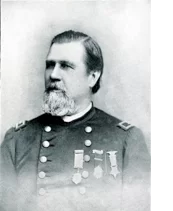
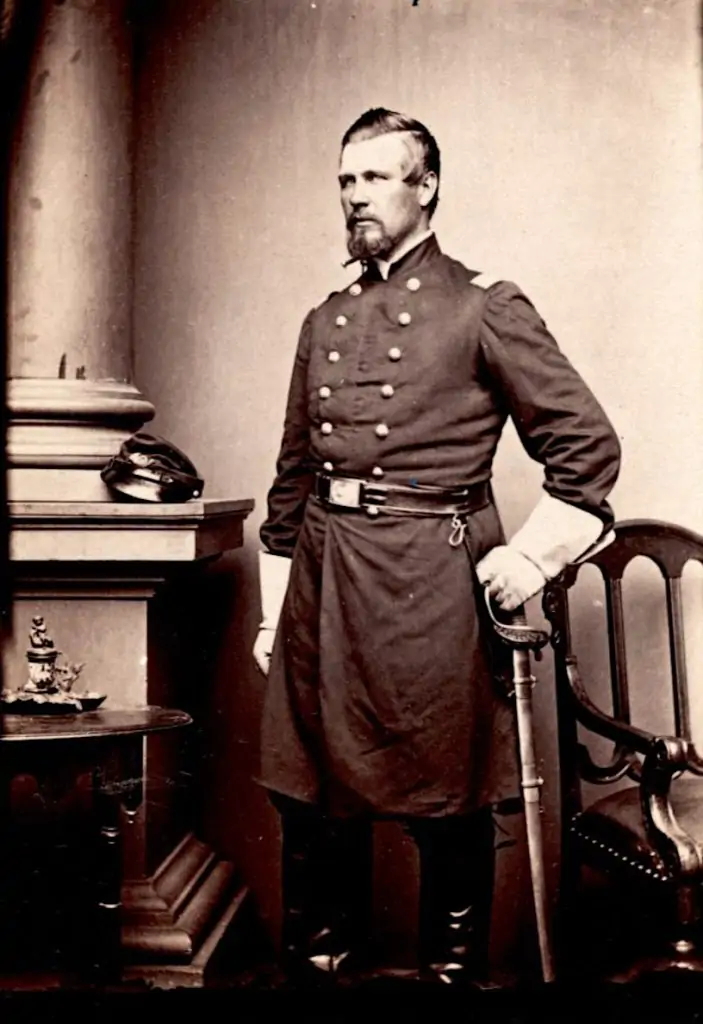
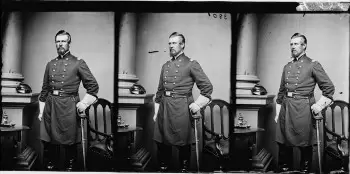
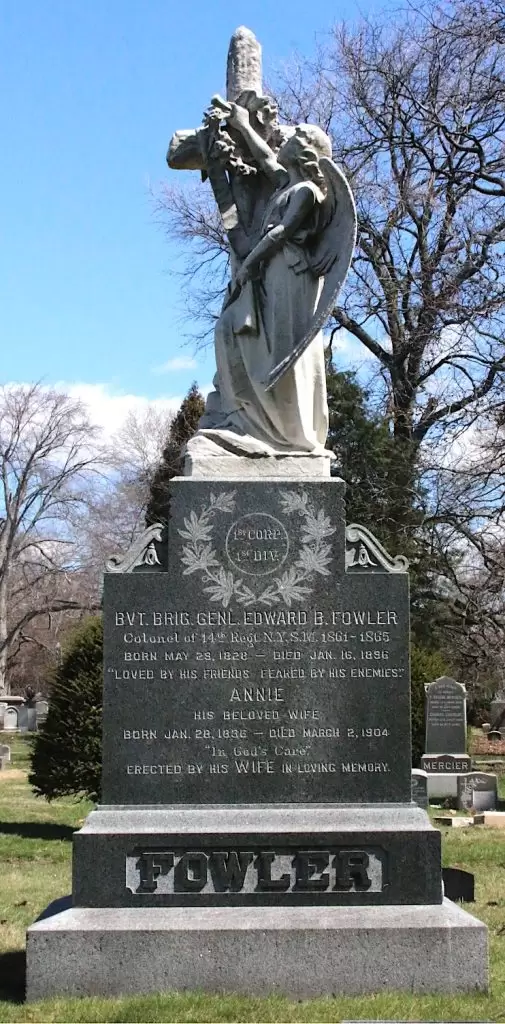
FOWLER, HENRY J. (1837-1885). First lieutenant, 71st Regiment, New York State National Guard, Company E. Fowler was born in Marlborough, New York, and moved to New York City as a young man where he first worked as a clerk in a hardware store. During the Civil War, he enlisted at New York City as a first lieutenant on May 28, 1862, was commissioned into Company E of the 71st Regiment and mustered out after three months on September 2 at New York City.
After the Civil War, Fowler joined the Open Board of Brokers, and, upon consolidation, became a member of the Stock Exchange in May 1869. As per his obituaries in the New York Tribune and the Brooklyn Standard Union, he was a brilliant broker who dealt with manipulations of money but never had any cloud of impropriety associated with his name. Among his clients was Jay Gould, one of the richest men in America. The obituary noted that his death, due to consumption, could be traced to his Civil War service. At the time of his death, his fortune, which varied with the ups and downs of the stock market, was between $200,000 and $300,000. Although he was unable to work the last three years of his life, the flag at the New York Stock Exchange flew at half-staff in his honor the day of his death. He last lived at 179 Livingston Street in Brooklyn. Sarah E. Fowler applied for a widow’s pension in 1906, application 843,591, but there is no evidence that it was granted. Section 154, lot 23960.
FOWLER, JOHN A. (1817-1873). Private, 174th New York Infantry Company F; 162nd New York Infantry, Company F. A native of Long Island, he enlisted on October 9, 1862, at New York City, and mustered into the 174th New York on November 5. His muster roll notes that he was a seaman by trade who was 5′ 7″ tall with black hair and eyes and a dark complexion. On February 17, l864, he was transferred into the 162nd New York. The 1873 Brooklyn Directory lists him as a seaman. He last lived in Brooklyn at 263 Park Avenue. He died of pneumonia. Section 36, lot 13214.
FOWLER, THEODORE H. (1841-1882). Private, 12th Regiment, New York State National Guard, Company A. Fowler, who was born in New York, enlisted as a private at New York City on May 31, 1862, mustered in on that day, and served with the 12th Regiment for three months. His last address was in Woodbridge, New Jersey, where he worked as a clerk. He succumbed to phthisis pulmonalis. Section 167, lot 17752.
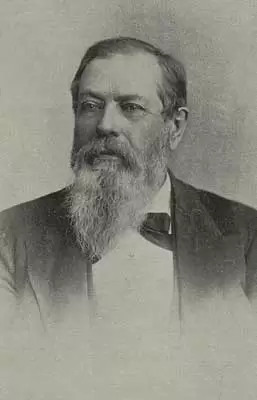
FOWLER, WILLIAM (1827-1897). Captain, 12th New York Infantry, Company C; 146th New York Infantry. Fowler, who was born on Vandewater Street in New York and attended Public School 13, was a contractor responsible for building thirteen edifices, among them the Old Olympic Theater on Broadway, the Broadway Central Hotel, Bellevue Hospital, the Barnum Museum and buildings on Randall’s and Ward’s Islands. At age 26, he took command of a company in the 12th Regiment of the New York State Militia and held that post until April 13, 1861. As per his obituary in the Jersey Journal (Jersey City), he was responsible for raising Company C of the 12th New York at the start of the Civil War. He enlisted as a captain at New York City on October 1, 1861, and was commissioned into the 12th New York Infantry’s Company C on December 10. He was wounded at the Battle of Second Bull Run, Virginia, on August 30, 1862, and detached as of January 18, 1863, as chief of the Ambulance Corps. His obituary notes that he was also wounded at the Battle of Antietam, Maryland. He transferred into the 146th New York at some point as a captain and acting adjutant and mustered out on June 24, 1863, although the history of the Thirteen Club notes that he resigned his commission on August 13, 1863, and fought in thirteen battles. His obituary states that he served throughout the War and helped put down the New York City Draft Riots in July 1863 but that is not indicated on his official records.
On September 13, 1863, Fowler purchased the Knickerbocker Cottage, a popular watering hole and spot for athletes to gather and compete. The New York City Directory of 1868 lists him as a builder but he branched out thereafter. The 1870 census notes that he is the proprietor of the Cottage and the 1880 census reports that he is a hotel proprietor. In 1881, he applied for and received an invalid pension, certificate 315,852. Fowler was a member of the G.A.R. and the 12th Veterans’ Association. A Democrat, he belonged to Tammany Hall but renounced William Jennings Bryan’s candidacy for President in 1896. Known in athletic circles for opening Knickerbocker Cottage at Sixth Avenue and 27th Street and managing it for 20 years, that site was where the New York Athletic Club and Harlem Regatta Organization were founded.
Fowler was also well-known in the New York area for his Club of Two with Edward Bouton, a duo that planned dinners for a hundred guests at Sixth Avenue and 24th Streets; those parties occurred the last twenty years of his life. Among other affiliations, he was a Freemason (Third Degree), and organizer of the Thirteen Club, an organization famous for scoffing at superstitions which met on the 13th of every month. That club was formed on Friday, January 13, 1882, in room 13 of the Knickerbocker Cottage, although another article states that the first dinner for thirteen members consisting of thirteen courses was on September 13, 1881. In addition, he belonged to the Hoboken Turtle Club, the Fat Man’s Club, the Knights Templar and the Ineas Tribe, Improved Order of Red Men.
On June 14, 1897, an article in the Jersey Journal described how the Improved Order of Red Men, of which Fowler was a past sachem, serenaded him in honor of his 70th birthday, referred to as “three score and ten.” The group, which came by train from Newark, paraded through nearby streets, set off fireworks, and “took possession of his house” before toasts were offered in Fowler’s residence. For the last ten years of his life, he and his son owned Knickerbocker Catering Company at 626 Washington Street in Manhattan. As per his obituary in the New York Herald on July 8, 1897, members of the Fraternal Order Anointed High Priests of New York State, Thirteen Club members, Masonic Veterans, and comrades from the Knights Templar and Odd Fellows were invited to attend his funeral at Scottish Rite Hall. His last address was 200 Clermont Avenue in Jersey City, New Jersey, but he also had a residence with his son at 252 West 137th Street in Manhattan. His cause of death was apoplexy. On July 20, 1897, the Jersey Journal ran a feature story about Fowler, focusing on the Thirteen Club and noting that Fowler loved to tell a story about how he shot a thirteen foot-long panther which only had thirteen teeth on September 13, 1870, with a gun loaded with thirteen buckshot thirteen feet above sea level, etc., etc. The Jolly 13 Club, which honors Fowler’s traditions, is an attempt to resurrect the original organization. Section 95, lot 9937, graves 4 and 5.
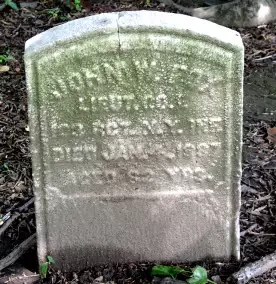
FOX, JOHN WATSON (1825-1887). First lieutenant, 103rd New York Infantry, Company E. Of English birth (although his paperwork at the Home for Disabled Soldiers says New York City), and a provision dealer as per the 1850 census, Fox enlisted as a quartermaster sergeant at New York City and mustered into Field and Staff on November 1, 1861. His muster roll notes that he also answered to the name of “Charles Fox.” On July 3, 1862, his letter to the editor, written on June 19, was published in the Brooklyn Daily Eagle and described conditions at his camp near Newbern, North Carolina:
I will try to furnish you with a few things that have transpired here recently, which may not have come to your knowledge. The bridge, you will remember, over which the rebels crossed after the battle of Newbern, they destroyed by fire after crossing. It has recently been completed by Government, and a locomotive and tender with one car came over from Beaufort and crossed over to Newbern on the 12th for the first time. Each day since we have heard the shrill sound of the iron horse, and have seen it pass with living freight. This is an omen that soon we shall make a forward movement on one of the places above, perhaps Kingston, or in that neighborhood. One thing is certain, we shall soon move from this place, and we need not advance over ten miles before we find all the fun in the shape of men we may desire—only to see them run as we did before, when advanced upon in full determination. On Friday last, when the regiment was out on brigade drill…one of our men took into his head to shoot himself…The man formerly went or tried to go over to the enemy; was punished upon his return, after which he tried to get a discharge, but failed and thus determined to discharge himself. Those who have never lived South, especially in the summer, can form no adequate idea of the kind of thunderstorms that so frequently visit us; they are not to be mentioned in the same day as those in the North….We have had three, more terrific than the rest, and today has witnessed one of the peals of thunder and flashes and columns of lightning that are past description. My horse was standing under a tree, beside another horse that was tied, about twenty yards from my tent, it raining hard all the time when a pillar of light seemed to pass down the tree. The horse that was tied, staggered and fell, to rise no more. My horse was frightened and ran a long distance away from the spot. No damage is visible. Our Colonel is fast mending and will soon be able to get out of the house, his wound having most healed.
On October 7, 1862, Fox was promoted to second lieutenant and transferred into Company E. Two years from the date that he enlisted, he was promoted to first lieutenant. On June 17, 1864, he was discharged.
In civilian life, he was listed as working in provisions in the 1876 Brooklyn Directory and also worked in the storehouse for the Department of Charities and Corrections. His application for an invalid pension was granted. As per his obituary in the Brooklyn Standard Union, Fox was a member of Louis W. Hamilton Post #152 of the G.A.R. and the St. George’s Society of New York, a charitable group honoring the patron saint of England. An article in the Brooklyn Daily Eagle notes that he belonged to the Twenty-Sixth Ward’s Republican Club; its members passed a resolution memorializing his death. He died of consumption of the lungs in Hampton, Virginia, where he had gone in the hope of regaining his health (disability of the hip) at the National Home for Disabled Volunteer Soldiers on October 19, 1886. In 1896, his widow, Mary S. Fox, applied for and received a pension, certificate 461,530. Section 58, lot 4962.
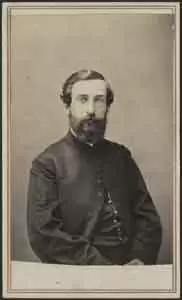
FOX, JR., NORMAN (1836-1907). Chaplain, 77th New York Infantry. Fox, who was born in Glens Falls, New York, was the son and grandson of Baptist ministers. He was a graduate of the University of Rochester, class of 1855, and its Theological School, class of 1857. As per his obituary in the Daily Saratogian (New York), he was a pastor of the Baptist church at Whitehall, New York, until the outbreak of the Civil War. He enlisted as a chaplain at Albany, New York, on December 1, 1862, was commissioned into the Field and Staff of the 77th that day, and mustered out two years later on December 13, 1864, at Saratoga, New York. His obituary notes that he served with the Army of the Potomac from the second engagement at Fredericksburg, Virginia, until Appomattox.
After the Civil War, Fox became editor of The Central Baptist in St. Louis, Missouri, then was a professor of history at William Jewell College in Missouri. As per his passport application of 1873, he was 5′ 8½” tall with gray eyes, black hair, dark complexion, broad forehead, long face, square chin and regular nose. Fox moved to Morristown, New Jersey, after his second wife died in 1880. Fox, who read and wrote prolifically on religious matters, authored Baptist Encyclopaedia (Philadelphia, 1883), a compendium of Baptist history and beliefs.
A major article in the Daily Saratogian on October 21, 1889, describes the dedication of a monument to the 77th New York at Gettysburg. With the sub-title, “Their Valor Fitly Market,” the article reminds readers that the 77th, which was raised in Saratoga in November 1861, provided support to the artillery which was stationed on Powers Hill. Fox was among the speakers at the dedication ceremony. Reverend Fox’s recollection, “Memories of Carnage,” spoke of the veterans’ indifference to danger, the march of the Sixth Corps and the historic importance of the battle. Subsequently, in 1898, he wrote about his experience at the Battle of Spotsylvania, Virginia:
“On the evening of May 10 [1864], at Spotsylvania, under the leadership of Gen. Upton, a column of a dozen selected regiments, including my own, all of the Sixth Corps (Sedgwick’s), made a charge; and, although the movement was unsuccessful in the end, they held for a time a portion of the Confederate works.
Among the wounded brought to the rear was a boy in gray, Private Thomas J. Roberts, of Company I, Twelfth Georgia. We lifted him from the ambulance, and having spread a blanket on the grass and laid him on it, I called a surgeon. A minie ball had struck him in the groin, and but a slight examination was enough to show that the wound was fatal.
He was a mere boy, and I can still see his really beautiful face as he lifted his dark, lustrous eyes to mine. It was little that I could do for him, but I spoke such words of comfort as I could command.
He showed fortitude and cheerfulness for one in so sad a situation, and he told me about his friends at home, speaking also of those from his own family circle who had already been killed in the war.
While we were talking he asked for a drink of water. I brought it and as I raised him to a sitting posture, so that he could drink, he leaned his head forward upon my shoulder, and, without a struggle, was dead.
We could give him only the rude burial of a soldier, but over his grave was lifted the prayer that the God of all comfort would tenderly support those far away who would wait in vain the return of the boy of their love and hopes.
Often since that night I have thought of that Southern soldier lad who died actually in my arms, as if in a mother’s embrace, and I pen this reminiscence that possibly it may make known to some surviving comrade or dear one that in his last hour what little could be done for him was tenderly performed.”
Active in civic affairs in Morristown, Fox was appointed to the board of excise, then was elected mayor as a Republican in 1900. On September 24, 1904, the Rochester (New York) Democrat & Chronicle advertised that Fox, a reverend and professor, was scheduled to deliver a lecture, “A Suggested Programme for Temperance Effort,” that was open to the public at no charge. According to his obituary in the Sun, he was a member of the Military Order of the Loyal Legion, a patriotic group; comrades from his commandery were invited to attend his funeral. Fox last lived in Morristown, New Jersey. His death was attributed to nephritis. Section 25, lot 2908.
FOX, WILLIAM (1822-1908). Private, 71st Regiment, New York State Militia, Company D. Born in New Boston, New Hampshire, Fox was a carpenter living in Boston, Massachusetts, as per the census of 1850. The census of 1860 records that he was a steward living in New York City. Fox served for three months with the 71st Regiment in 1861. The census of 1870 and the New York City Directory of 1880 indicate that he was a carpenter. In 1907, he applied for and received a pension, certificate 1,134,495. His last address was 160 Spring Street in Manhattan. Pneumonia caused his death. Section 14, lot 19438, grave 66.
FOY, CHARLES H. (enlisted as SMITH, WILLIAM) (1809-1866). Medal of Honor recipient; signal quartermaster, United States Navy. Originally from Portsmouth, New Hampshire, he was a career seaman. Apparently, he enlisted as William Smith at some point. According to a hospital ticket issued to him on May 2, 1861, he was treated for rheumatism after leaving the USS Pawnee and his personal belongings were enumerated on a receipt. During the Civil War, he entered service as a seaman at Boston, Massachusetts, on July 8, 1861, and served aboard the USS Ohio, USS North Carolina, and USS Rhode Island, from which he was discharged as a quartermaster on April 15, 1864. He re-enlisted as a seaman at Boston on August 24, 1864, for a two year term. He was assigned to the USS Ohio and then the USS Rhode Island.
He was awarded a Medal of Honor on June 22, 1865, for his action at Fort Fisher and Federal Point Batteries, North Carolina, on January 13-15, 1865. At that time, Foy carried out his duties courageously on-board the Rhode Island and “…continued to be outstanding by his good conduct and faithful services throughout the engagement, which resulted in a heavy casualty list when an attempt was made to storm Fort Fisher.” That special compliment to Foy was also included in the report of Commander Stephen D. Trenchard of the Rhode Island in his report of that action on January 16, 1865. Trenchard also noted that Foy had been in the Navy upward of twenty years, three of which were on the USS Rhode Island. He died from an aneurysm at the Brooklyn Naval Hospital on May 30, 1866, while still a seaman. Section 10, lot 13324.
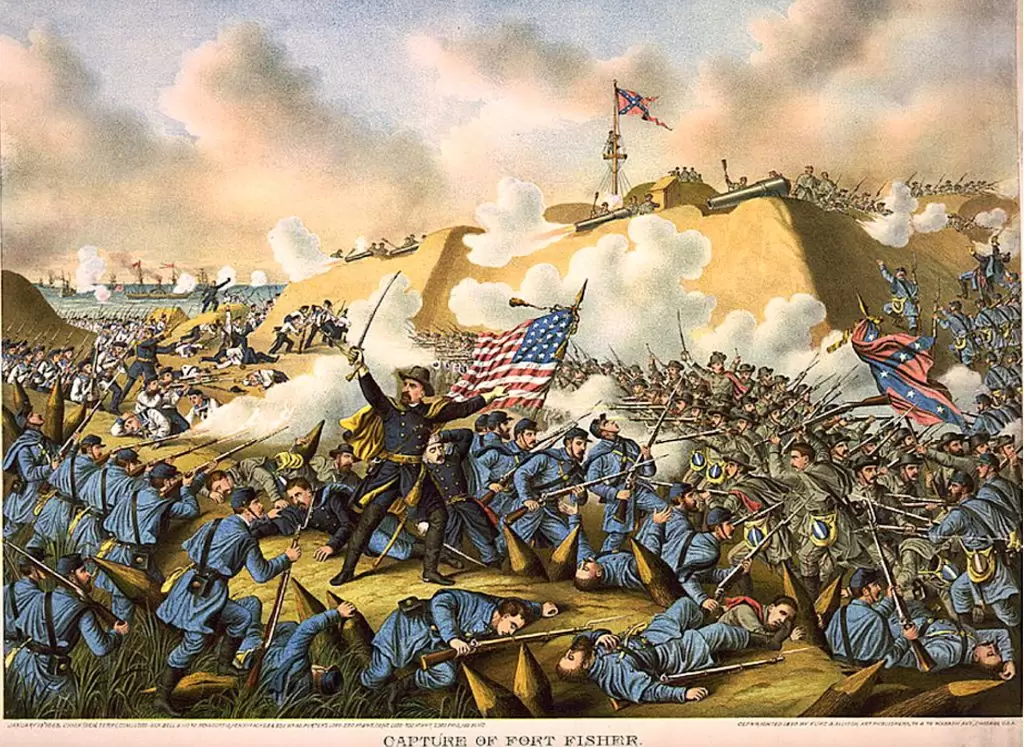
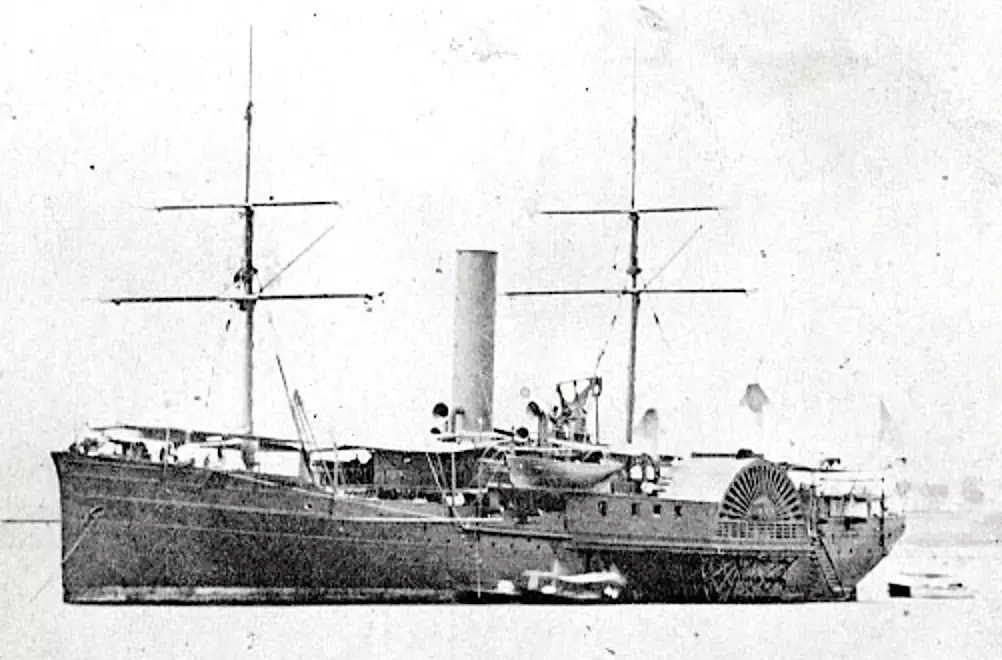
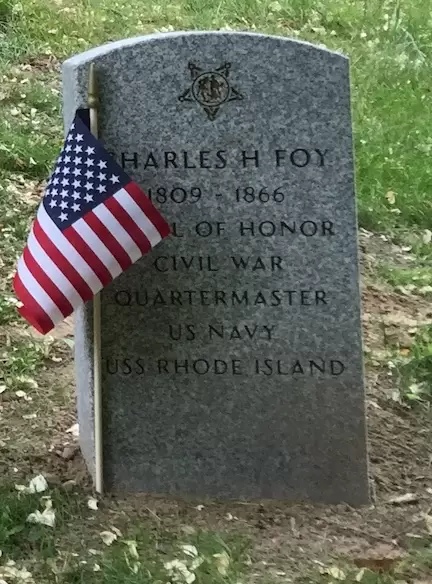
FRAME, GEORGE W. (1829-1877). Private, 79th New York Infantry, Company E. Of Irish origin, Frame enlisted as a private on August 26, 1862, at New York City, and mustered immediately into the 79th New York. As per his muster roll, he was a shoemaker who was 5′ 7″ tall with blue eyes, sandy colored hair and a fair complexion. The muster roll indicates that he was absent without leave March 24 through April 2, 1864; ultimately, he deserted on June 7, 1863, at Louisville, Kentucky. His last residence was 91 Grand Street in Hoboken, New Jersey. He died from pneumonia. Section 40, lot 5436.
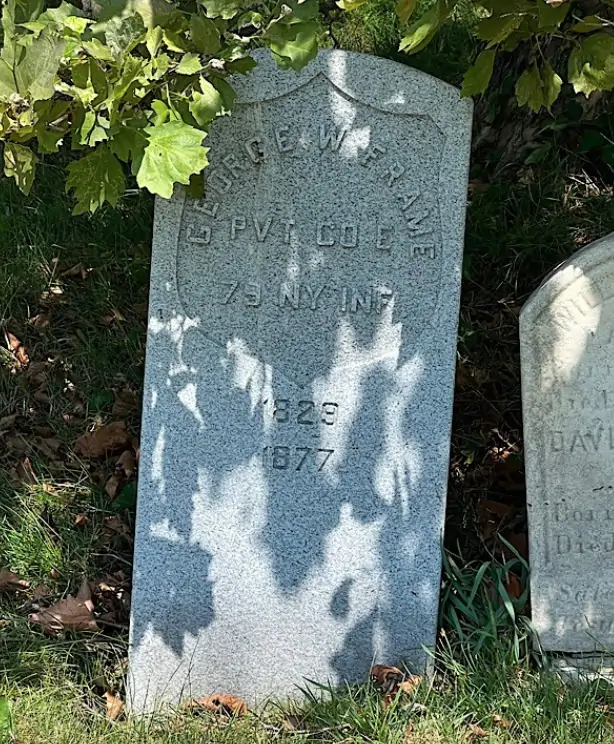
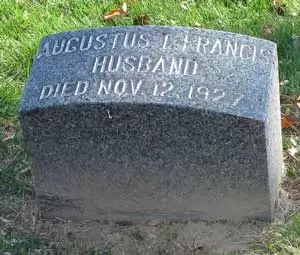
FRANCIS, AUGUSTUS THEODORE (1838-1927). First sergeant, 71st Regiment, New York State Militia, Company C. Francis’ great-great-grandfather, Tench Francis, came to America in the 18th century from Dublin, Ireland, to serve as the attorney for Lord Baltimore. His father, a Maryland journalist, moved to New York City in 1835 where Augustus Francis was born three years later. Educated at the Friends Institute, he began employment in a dry goods store at the age of 14.
Francis first joined the 71st on March 9, 1860. He served for three months as a corporal in the 71st Regiment in 1861 and fought at the Battle of Bull Run, Virginia. In May 1862, he returned to the 71st as a sergeant, was detailed as a left general guide, and mustered out as a first sergeant. Although he did not go to the front in 1863, he organized and drilled the Home Guard, and was present for a week at High Bridge (upper Manhattan) during the Draft Riots that year. Remaining with the 71st Regiment, he was commissioned first lieutenant on June 15, 1864, became an adjutant on December 11, 1866, and was instrumental when the 37th was consolidated into his regiment in 1870. During a brigade parade that year in Prospect Park, Brooklyn, he was thrown from his horse and suffered a broken leg, but recuperated in time to rejoin the regiment when it was called upon to suppress the Orange Riot, a confrontation between Irish Protestants and Catholics, in New York City in 1871. Before resigning in 1871, he was a charter member of the 71st Veteran Association.
Francis tried his hand in many enterprises including banking, stationery, speculation, and the jewelry business. He was director of the Mercantile Library and chaired its committee to publish a catalogue. Active in many organizations, he was a member of the New-York Historical Society, Lafayette Post #140 of the G.A.R., the Royal Arcanum, the Republican Club of New York, and the National Rifle Association. On March 9, 1886, he was elected captain of Company C of the 71st marking the 25th anniversary of his joining the regiment. In 1904, his application for a pension was granted, certificate 1,099,906. His last home was in Yorktown Heights, New York. A cerebral hemorrhage caused his death. Section 162, lot 14991.
FRANCIS, EDWARD WILLIAM (1842-1906). Private, 71st Regiment, New York State National Guard, Company F. A native New Yorker, Francis enlisted there as a private on May 27, 1862, mustered into the 71st National Guard that day, and mustered out at New York City after three months on September 2. At the time of the census of 1880, he was living in East Orange, New Jersey, and working as an accountant. His Civil War service is confirmed by the Veterans Census of 1890. The census of 1900 and the East Orange Directory of 1902 list him as a treasurer. He last lived at 28 Walnut Street in East Orange, New Jersey. He died of chronic endocarditis and nephritis. Section 84, lot 5853.
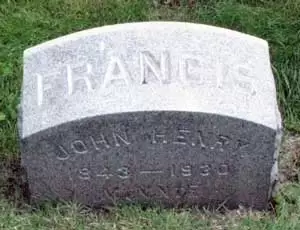
FRANCIS, JOHN HENRY (1843-1930). Private, 13th Regiment, New York State National Guard, Company D; 56th Regiment, New York State National Guard, Company I; 7th New York Light Artillery. Francis was born in Manhattan. As per his muster roll, he was a clerk who was 5′ 4″ tall with blue eyes, brown hair and a fair complexion. He first served for three months with the 13th Regiment. He enlisted as a private on May 28, 1862, mustering in on that day, and mustered out at Brooklyn on September 12. He then served for 30 days with the 56th Regiment in 1863. That regiment was ordered to Harrisburg, Pennsylvania, on June 18, was part of the Third Brigade, and mustered out at Brooklyn on July 24. Subsequently, he enlisted as a private on September 19, 1864, at Albany, New York, mustered into the 7th Light Artillery (company unknown) that same day, and mustered out on July 22, 1865, at Albany.
A wholesale druggist, Francis lauded the attributes of St. Jacob’s Oil in Ballou’s Monthly Magazine in March 1881. His pension application in 1905 was successful, certificate 1,113,108. Francis’s obituary in the Brooklyn Daily Eagle, which confirms his Civil War service, notes that he lived in Brooklyn for 70 years. He last lived at 217 St. John’s Place in Brooklyn. His death was attributed to a cardiac condition. Section 131, lot 34288, grave 3.
FRANCISCO (or FRANASCO), ALEXANDER (1840-1907). Private, 71st Regiment, New York State National Guard, Company K. Francisco was born in New York City. During the Civil War, he enlisted as a private at New York City on May 28, 1862, mustered into the 71st Regiment, and mustered out at New York City on September 2, 1862. As per his obituary in the Brooklyn Daily Eagle, he participated in the Battle of Bull Run, Virginia.
Francisco’s 1880 application for a passport notes that he was 5′ 8″ tall with black hair and eyes, dark complexion, straight nose, medium mouth, square chin and long face. The Brooklyn Directory for 1888 lists Francisco as a machinist. As per the 1900 census, he was married to Eliza, née Ryan, for twenty years, lived in a rental at 412 McDonough Street and was chief engineer at a dry goods store. The 1905 New York State Census indicates that he was married and lived in Brooklyn. His obituary in the Brooklyn Daily Eagle reports that he was a past commander of the James McQuade Post #557 of the G.A.R., belonged to the Mechanical Engineers Association, and was a Freemason.
According to his death certificate, Francisco last lived at 289 Reid Avenue in Brooklyn, was married and was a machinist. His death was attributed to pneumonia. Masonic services were held in his memory. Eliza Francisco’s petition to the Kings County Surrogate’s Court on December 19, 1907, stated that his personal property did not exceed the sum of $150. He is listed in the Green-Wood Cemetery’s database as Alexander Franasco. Section 116, lot 4073, grave 472.
FRANCISCO, DAVID CORNELIUS (1843-1918). Private, 13th Regiment, New York State National Guard, Company H. Born in New York City, Francisco enlisted there as a private in 1863 and mustered into the 13th National Guard for its activation of 30 days. He was discharged from military service after his enlistment. According to the 1870 census, he worked on a grain elevator, and in 1880, the census listed his occupation as lawyer. A news article in the Newtown Register on November 12, 1885, noted that his wife discovered a painter working in their home ransacking a bureau and taking $50 worth of jewelry, a crime for which the workman was immediately arrested after Mrs. Francisco called a police officer. His last residence was 35 Park Slope in Ridgewood, New Jersey. Section 61, lot 3387.
FRANK, EMIL HENRY (1843-1919). First lieutenant, 52nd New York Infantry, Company A. Born in Dresden, Germany, and a brother of Paul (see), he enlisted on November 1, 1861, at New York City, as a sergeant, and mustered into the 52nd New York that same day. He was wounded at Fair Oaks, Virginia, on June 1, 1862, and promoted to first lieutenant on September 6 of that year. He was cited for bravery by Colonel Paul Frank in his report from Falmouth, Virginia, on December 20, 1862, for serving as a color bearer and guarding the flag when exposed to the enemy’s fire. He was discharged on February 13, 1863. According to his obituary in The New York Times, he also fought at Antietam, Maryland, and Fredericksburg, Virginia.
Frank was a fire and marine insurance broker who headed the firm Frank & DuBois in Manhattan. In addition, he was a founder of the Brooklyn Riding and Driving Club and served on its Board of Directors. His last residence was at 21 Montgomery Place in Brooklyn. He succumbed to diabetes mellitus. Section 162, lot 15587.
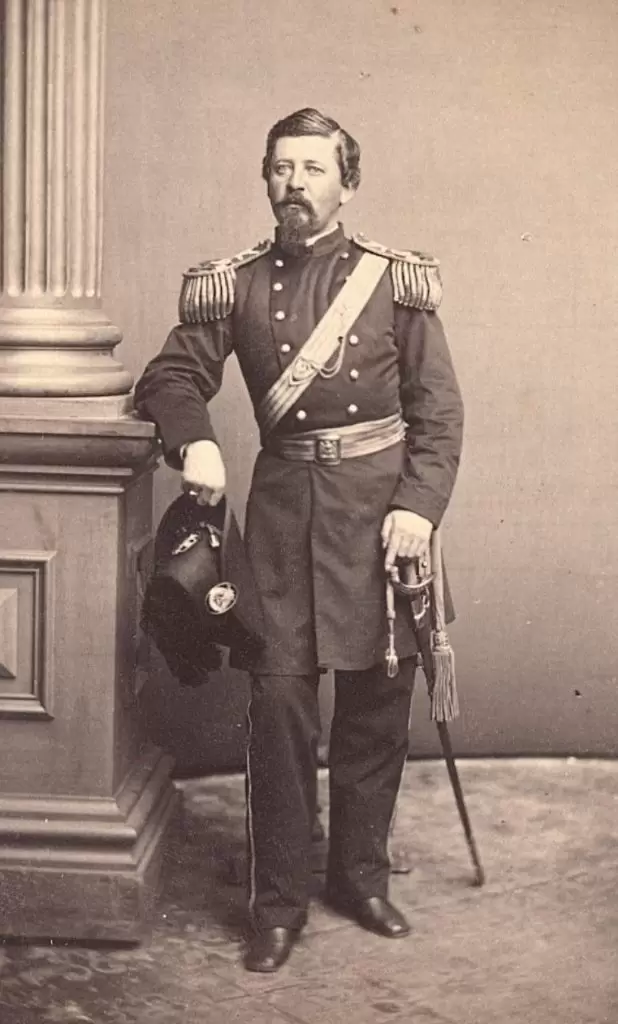
FRANK, PAUL (1828-1875). Brigadier general by brevet; colonel, 52nd New York Infantry; first lieutenant and adjutant, 5th Regiment, New York State Militia. Born in Saxony, Germany, on February 7, 1828, as Henry Paul Ferdinand Frank, he enlisted on April 19, 1861, at New York City, as a first lieutenant. On May 1, 1861, he was commissioned into the Field and Staff of the 5th New York State Militia as first lieutenant and adjutant and mustered out on August 7, 1861, at New York City. On October 25, 1861, he was promoted to colonel and was commissioned into the Field and Staff of the 52nd New York Infantry on November 1, the same day that his brother Emil (see) enlisted in that regiment. In the Peninsula Campaign in 1862, he was actively engaged in the Battles of Seven Pines and Fair Oaks (both in Virginia) and in all the battles and engagements during the seven days of fighting. William French praised him in his field report from Fair Oaks, Virginia, on June 3, 1862, for repulsing the enemy. Subsequently, Frank described the action at the Battle of Antietam, Maryland (September 17, 1862), in his report three days later:
“…I therefore took the Fifty-second on the high ground to our right and opened fire on the flank of the rebel regiments, the Seventh New York State Volunteers taking position on the left of my regiment, and supporting it most gallantly. After about half an hour’s fighting the rebel lines broke, and seeing our forces deploying out of a corn-field in front of the rebels, I ceased firing, and shortly afterward was ordered back for a fresh supply of ammunition. I used an average of from 50 to 60 rounds per man. Having a fresh supply, I again brought the regiment to the front, where it was in position till Friday, September 19, morning, at which time it was ordered to take possession of an orchard, about a quarter of a mile in front, from which place it was withdrawn during the afternoon to its present camping ground.”
From June of 1863 until July of 1864, he fought in these Virginia battles: Wilderness, Po River, Mattaponi, Spotsylvania, Coal Harbor, and later at Petersburg and Richmond. He also fought in Virginia at Fredericksburg and Chancellorsville, and was wounded at the latter. He mustered out on November 9, 1864, at Stevensburg, Virginia. Frank was promoted by brevet to brigadier general of United States Volunteers on March 13, 1865, “for gallant and meritorious services during the War.” A foreign diplomat, he was United States Marshal in the Consular Court in Kanagawa, Japan, from 1866-68, and vice consul in Osaka and Hiogo, Japan, from 1871-2. At the time of his death, he resided in Washington, D.C. Section 162, lot 15587.
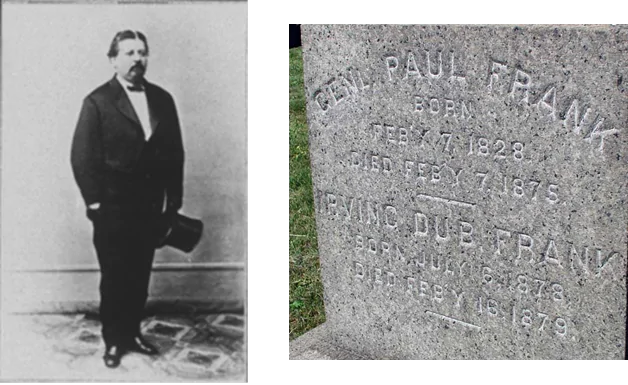
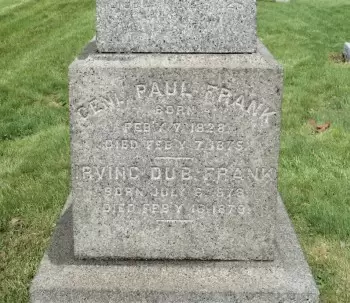
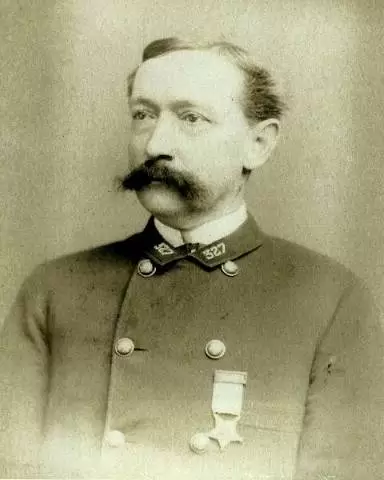
FRANKENBERG (or FRANKENBERGH, FRANKENBURG), SANFORD (or SAMUEL) HALL (1839-1907). Sergeant, 48th New York Infantry, Companies C and B; 13th Regiment, New York State National Guard, Company H. Born in Marion, New York, and a teller by occupation, he was imbued with the “war fever” while on a visit to New York, and joined Company F of the 13th Regiment, New York State National Guard. He mustered in on April 23, 1861, for three months. At the end of his service, he enlisted as a sergeant on August 15, 1861, at Brooklyn, and mustered into Company C of the 48th New York on August 25. Among the actions involving his regiment were the capture of Hilton Head, South Carolina, on November 7, 1861, the engagement at Port Royal Ferry, South Carolina, the siege of Fort Pulaski, Georgia, on April 11, 1862, and the capture of Folly and Morris Islands in South Carolina.
During the night assault on Fort Wagner, South Carolina, on July 18, 1863, Frankenburg was severely wounded in the left shoulder, requiring the removal of his left shoulder-blade and leaving him permanently disabled. In this attack, 700 of the 800 men in his regiment were killed, injured, or taken as prisoners. He spent several months at the Army hospital in Beaufort, South Carolina, before returning to New York where he was discharged for disability on June 8, 1864, at David’s Island, New York Harbor. In 1864, he applied for and was granted an invalid pension, certificate 30,486.
Frankenberg was a member of Ulysses S. Grant Post #327 of the G.A.R. and worked as a teller at the Dime Savings Bank in Brooklyn where he was employed for 43 years. He was one of the honor guards for General Grant’s burial, and accompanied the remains to the tomb in Riverside Park, New York. He last lived in Brooklyn where he resided at 395 East 15th Street. He died of nephritis. His widow, Pauline G. Frankenberg, applied for and received a pension in 1907, certificate 646,057. Section 207, lot 32545, grave 2.
FRANKLIN, BENJAMIN H. (1824-1909). First lieutenant, New York Marine Light Artillery, Company E. After enlisting at New York City at age 38 on March 27, 1862, he was commissioned in two months later on May 27. He resigned on March 10, 1863. He lived to age 84 and was a resident of the Bronx. The cause of his death was nephritis. Section 90, lot 1467.
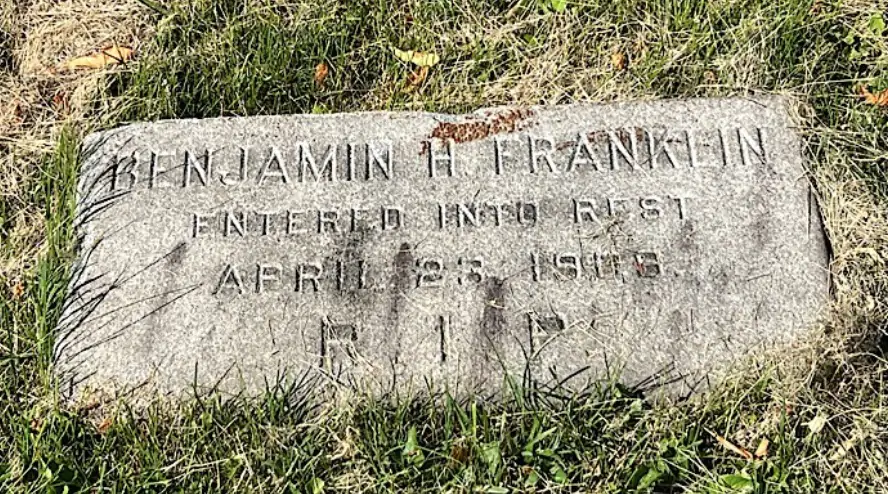
FRANKLIN, JOHN E. (1846-1871). Private, 8th Regiment, New York State Militia, Company C. Franklin served for 30 days as a private in the 8th Regiment when it was activated in 1861. His last address was in Staten Island. His widow, Eugenie Franklin, applied for a pension in 1890, certificate 369,340. Section 36, lot 7988.
FRANKLIN, LUCIEN A. (or L. A.) (1838-1862). Private, 84th New York (14th Brooklyn) Infantry, Company E. A native of Brooklyn, Franklin enlisted on April 18, 1861, mustered in on May 23, and was discharged for disability on July 24, 1861, at Arlington, Virginia. He died of consumption on April 23, 1862. As per his obituary in The New York Times, his comrades in the Fourteenth Regiment were invited to attend his funeral. His mother, Ann Franklin, who is interred with him, applied for a pension in January 1891, application 502,017, but she died before it was certified. Section 147, lot 22232.
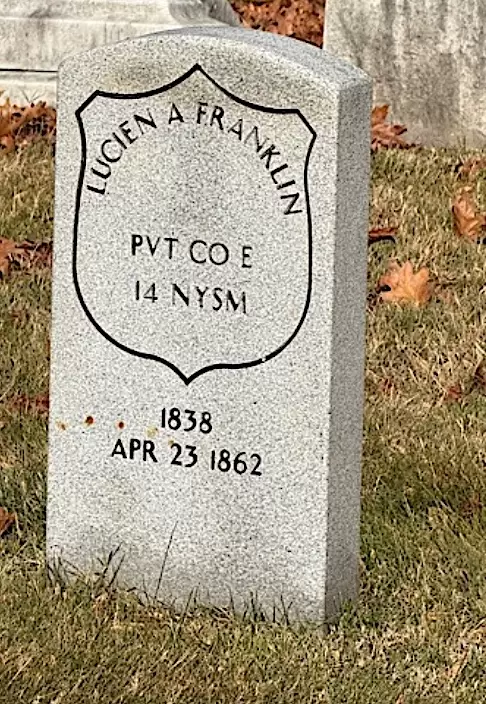
FRANZ, PHILIP (1829-1906). Sergeant, 13th Regiment, New York State Militia, Company E. A New Yorker by birth, he was a baker according to the 1860 census. Franz served with the 13th Regiment as a sergeant for three months in 1861. He then re-enlisted at Brooklyn on May 28, 1862, returned to the 13th Regiment’s Company E, and mustered out on September 12, 1862, at Brooklyn. As per the census of 1870 and the Brooklyn Directory of 1873, he was in the hay and feed business; the census of 1880 and the Brooklyn Directory of 1881 indicate that he was a painter. His Civil War service is confirmed by the Veterans Census of 1890. In 1891, his application for an invalid pension was approved, certificate 991,195. The census of 1900 reports that he was a house painter; the Brooklyn Directory for 1901 states that he was a baker. A member of William Rankin Post #10 of the G.A.R. from 1894 to 1906, he was also a Freemason; comrades from both associations were invited to attend his funeral.
As per an article about Franz’s sudden death in Brooklyn Daily Eagle on March 1, 1906, he died at the ticket booth of the 13th Armory where he had been a night watchman. The article, which confirmed Franz’s Civil War service, indicated that Franz was associated with the 13th for more than forty years, always wanted to die with his boots on, and was ready for the review of the 13th by Controller Metz of the 14th Regiment. Hundreds were at the ceremony while Franz’s death went unnoticed; by the time the assistant surgeon of the regiment arrived to treat him, it was too late. An article about the funeral appeared in the Brooklyn Daily Eagle on March 5, 1906. Franz was buried with full military honors. Company C furnished an honor guard which preceded the hearse drawn by two black horses. Members of the regiment followed in full dress uniform. The procession also included the fife and drum corps of the Rankin Post, a bugler, and about 100 members of the Rankin Post. “Taps” was played at the gravesite and a volley was fired in tribute to Franz. He last resided at 573 Putnam Avenue in Brooklyn. Section 80, lot 2000.
